2024-03-08发布于安徽
Arts Highlights
CISH
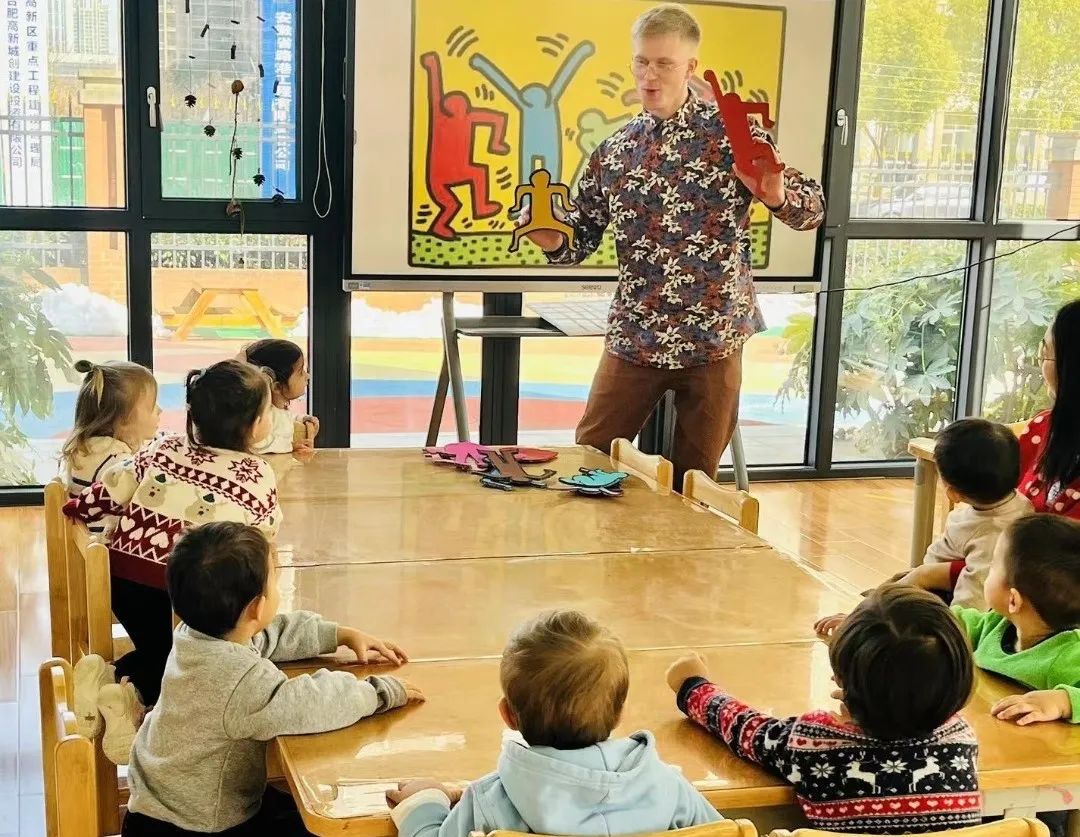
EY Arts
Class Photos
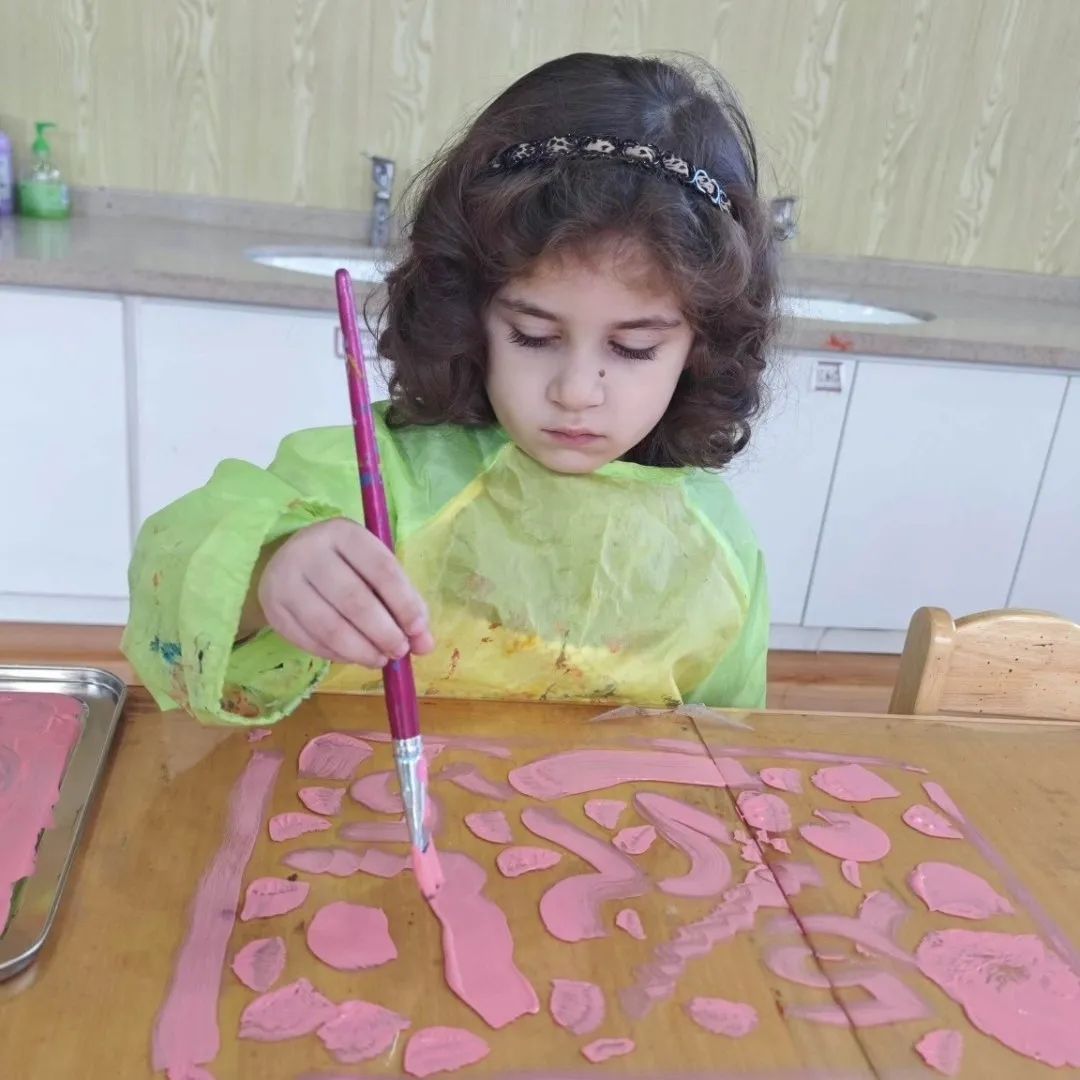
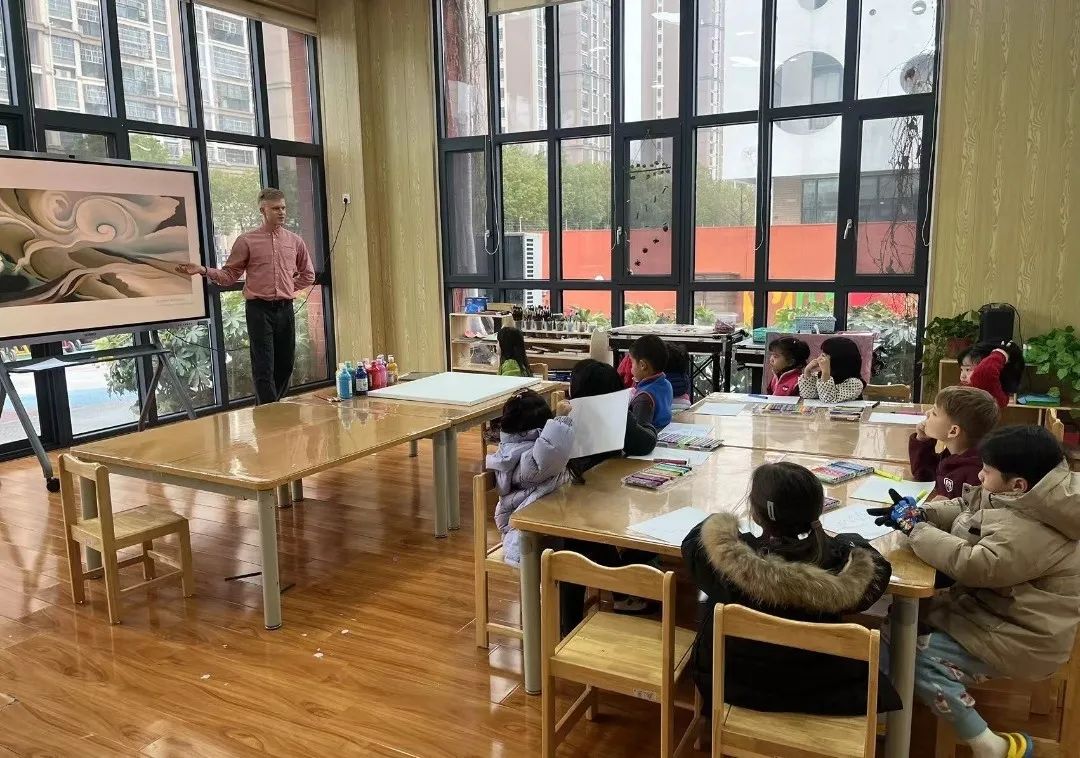
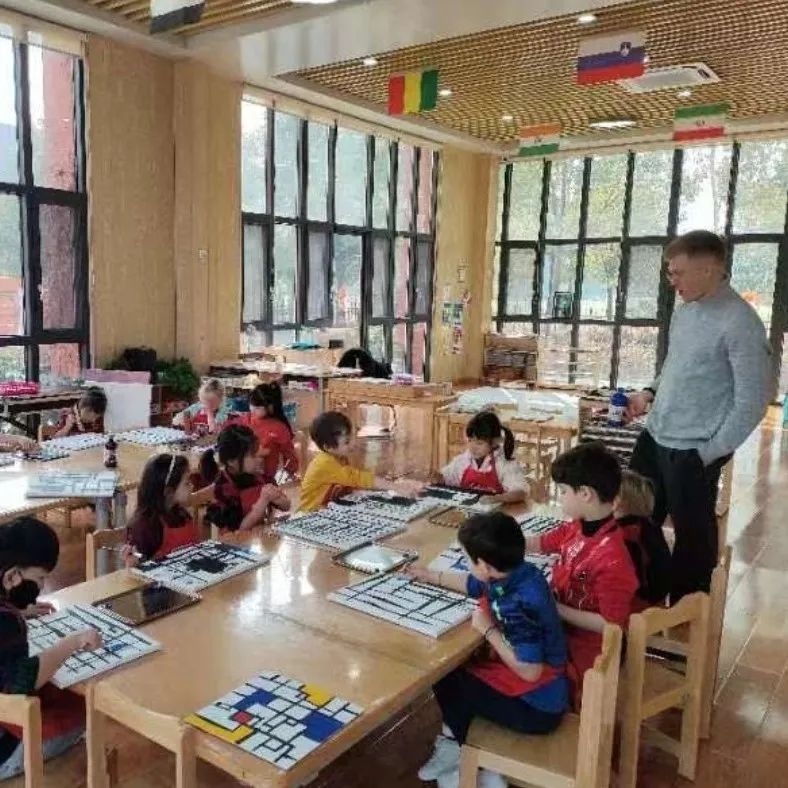
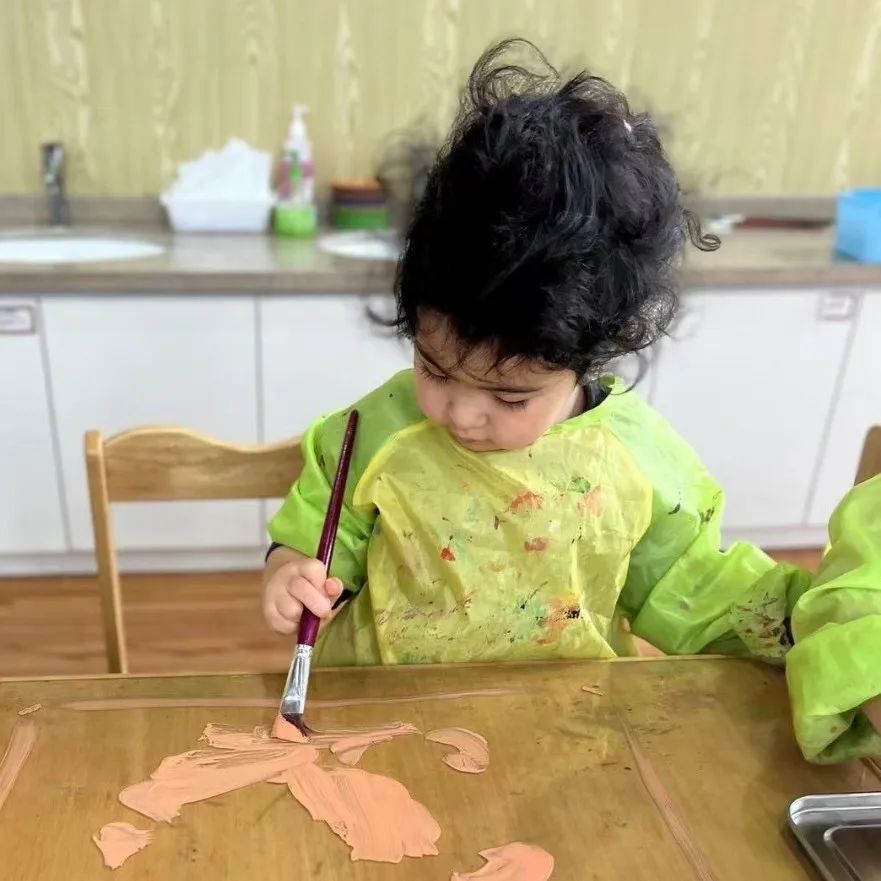
Pre-K (Evan Kirby)
This week the students are continuing their Kieth Haring art project. They all got a chance to help paint the tree for our mural. Each student was so great at handling the paint and brushes. I am so proud of how far we have come on this project! Splendid work team!
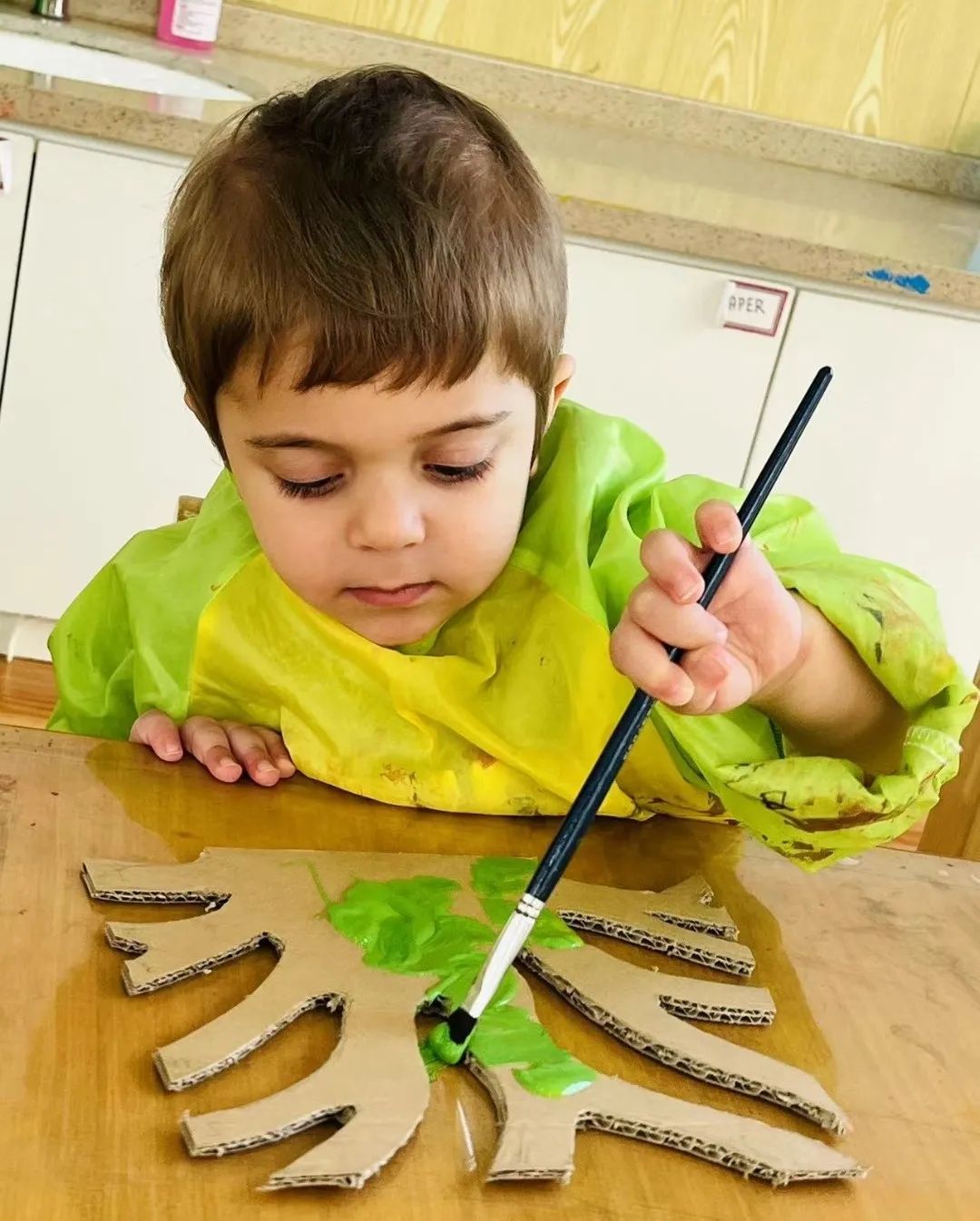
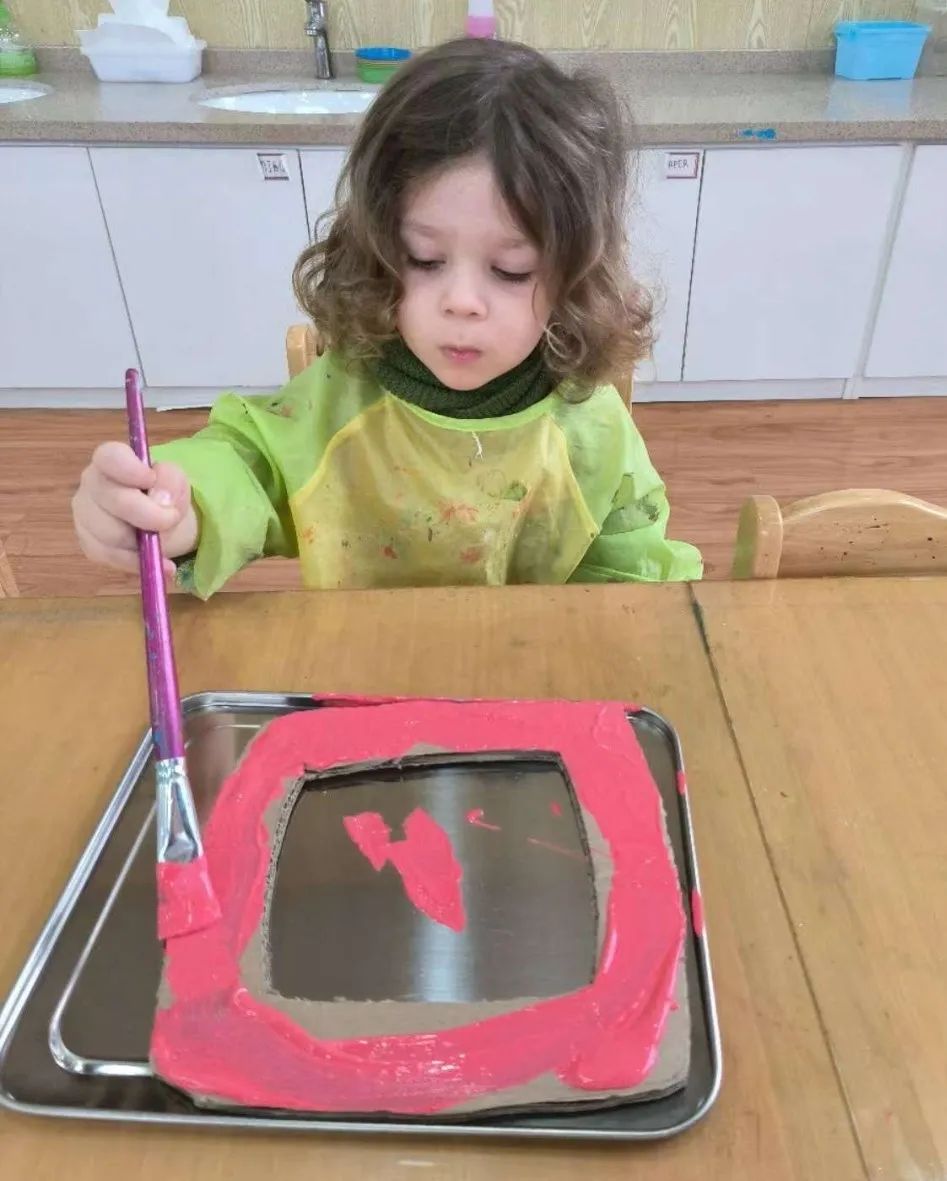
Arts
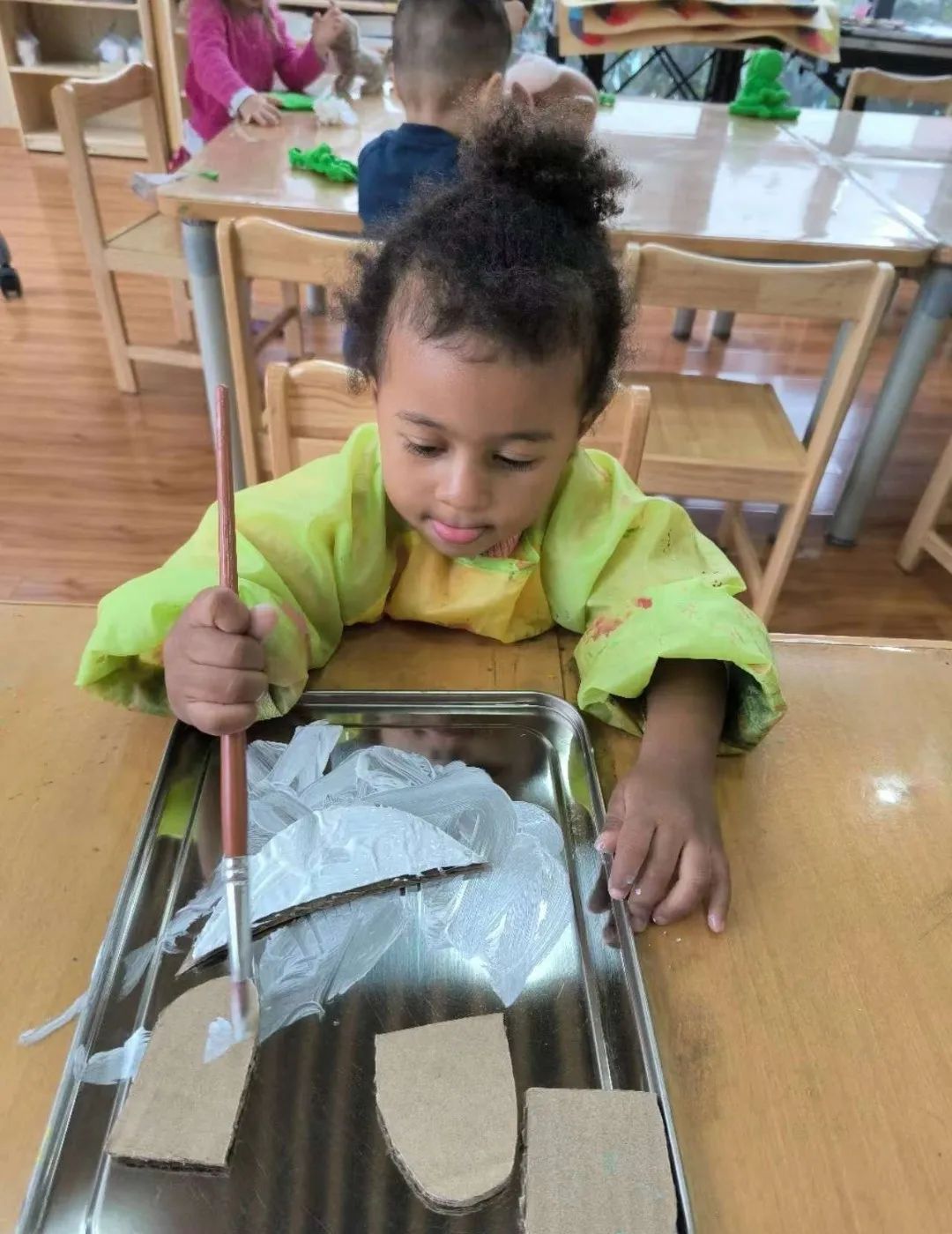
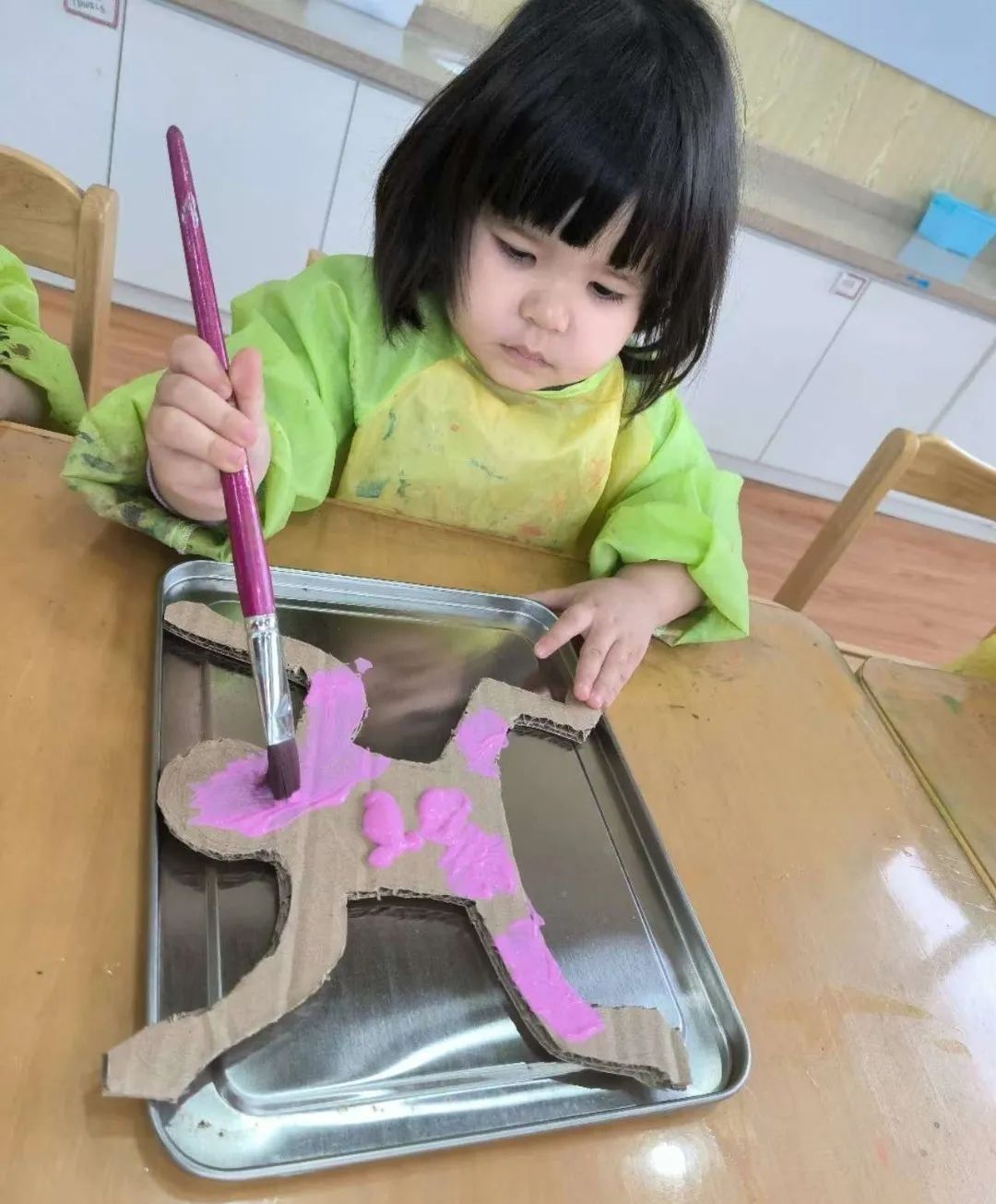
K1 (Evan Kirby)
This week the students are finishing the first layer of their Lee Krasner inspired paintings. They are doing such an excellent job with respecting the art room painting process and a wonderful job working together during class. I am proud of everyone this week for making so much progress on this project.
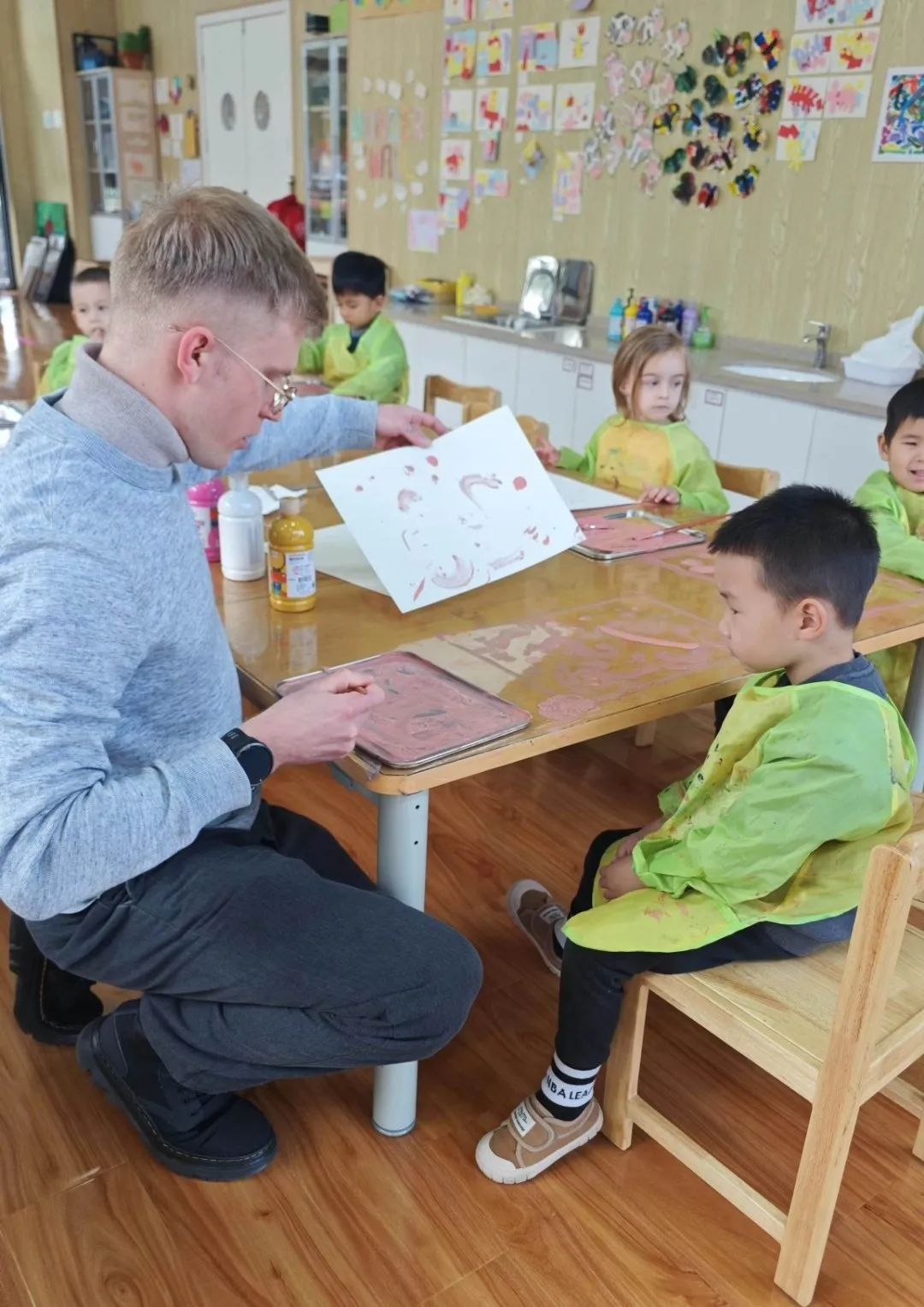

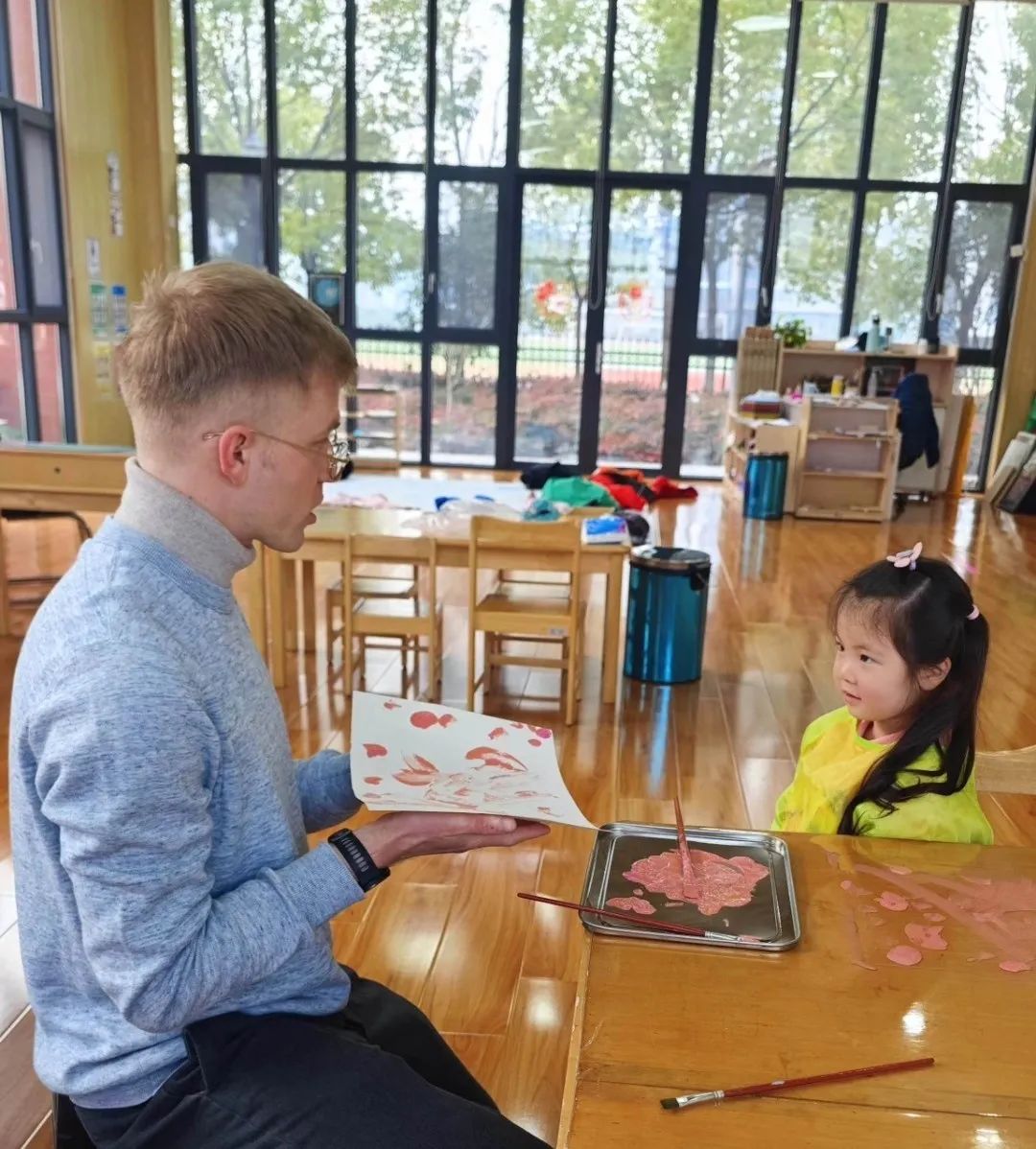
K2 (Evan Kirby)
This week the students are continuing their collaborative painting project on Georgia O'Keeffe. They are doing an excellent job working together and respecting the art room’s painting procedures. I am very proud of everyone, let's keep it up!
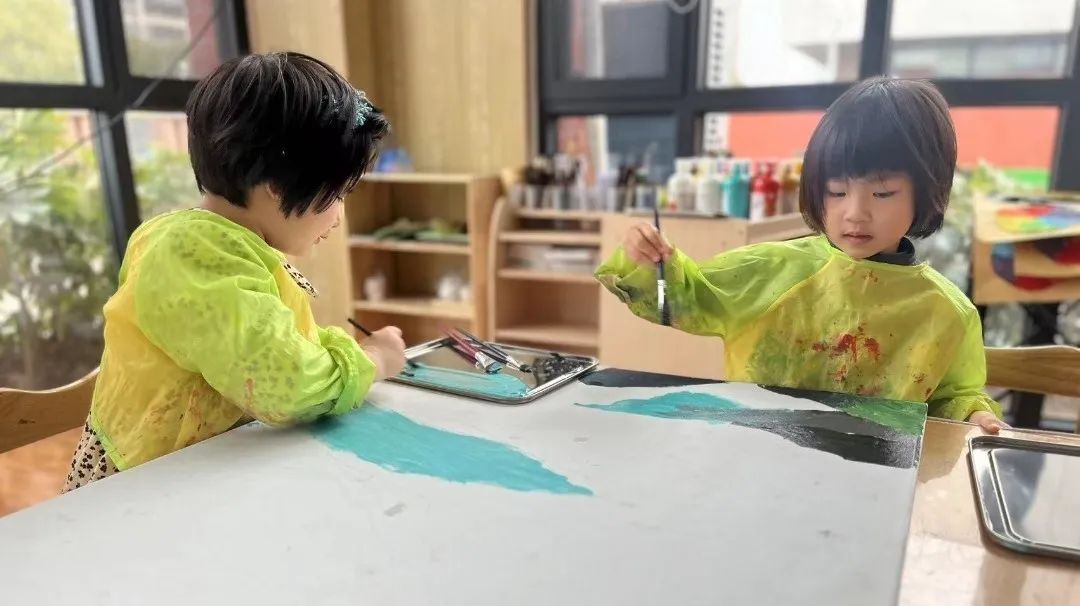
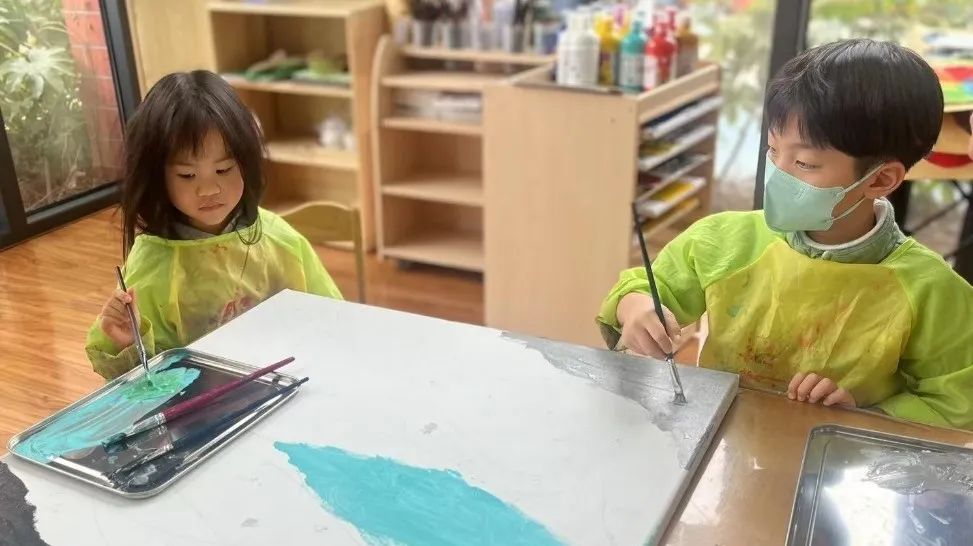
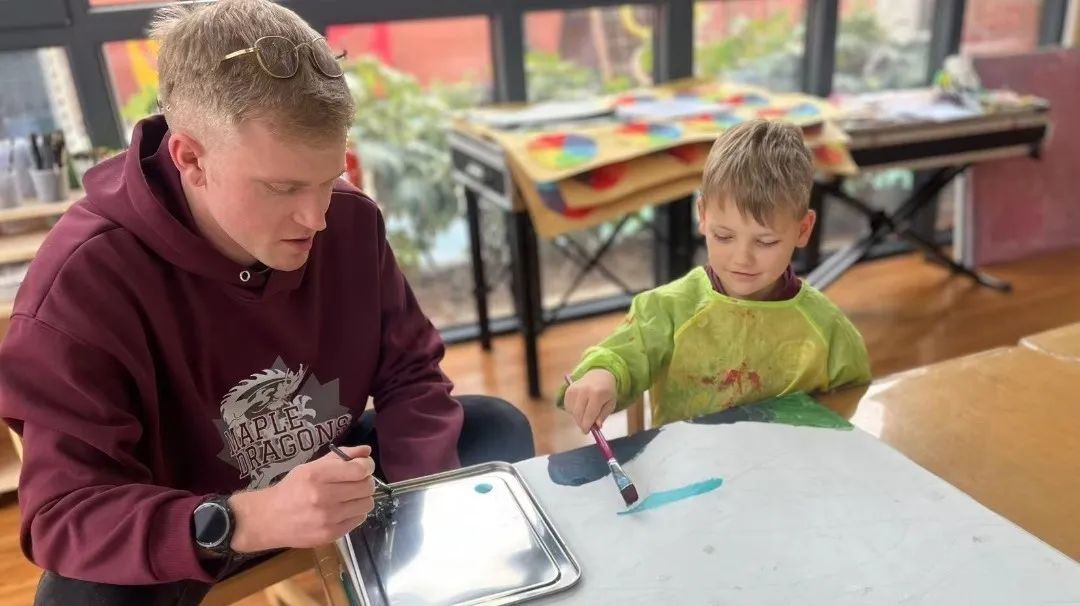
K3 (Evan Kirby)
This week the K3 students are finishing their Piet Mondrian pieces, they are all working hard on making their work look the very best and doing such a great job with taking care of classroom painting protocols. I'm very proud of everyone this week, let's keep it up!
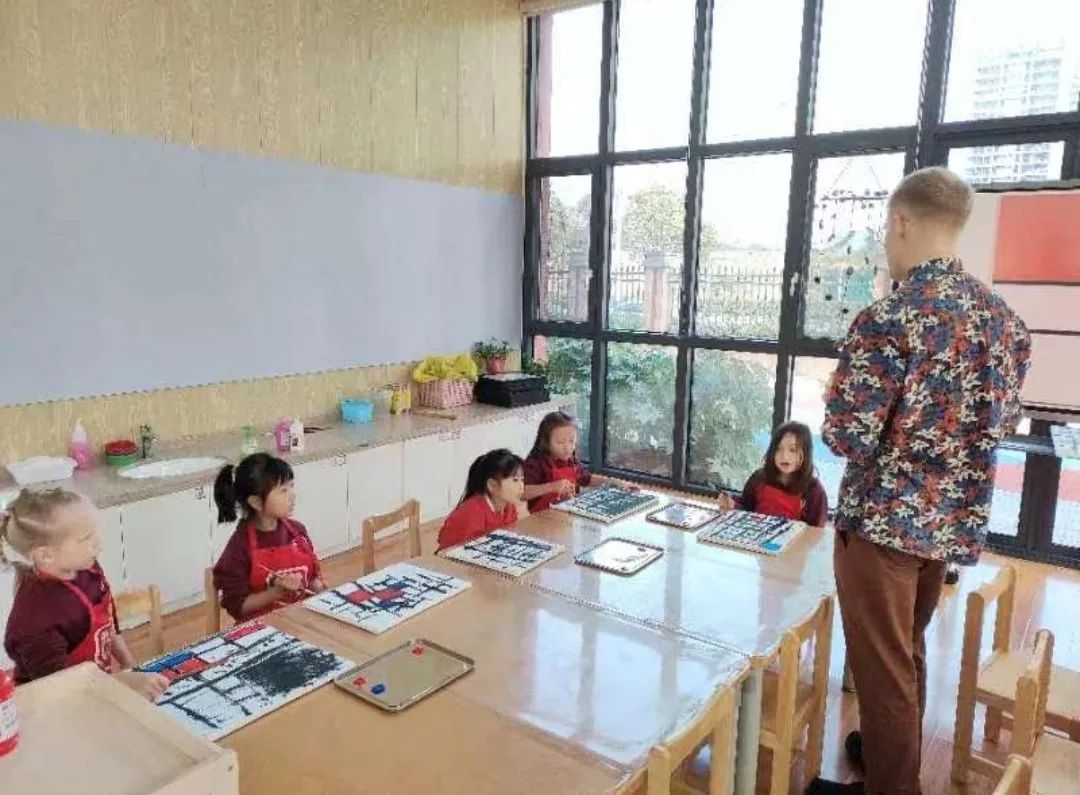
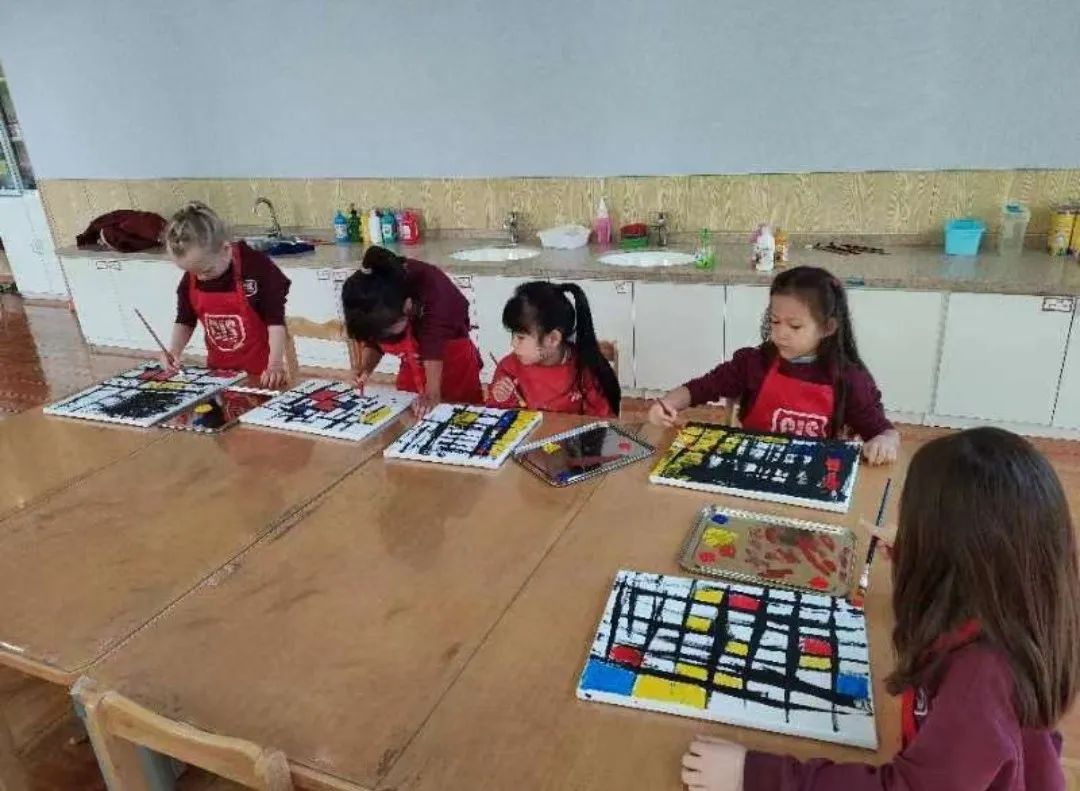
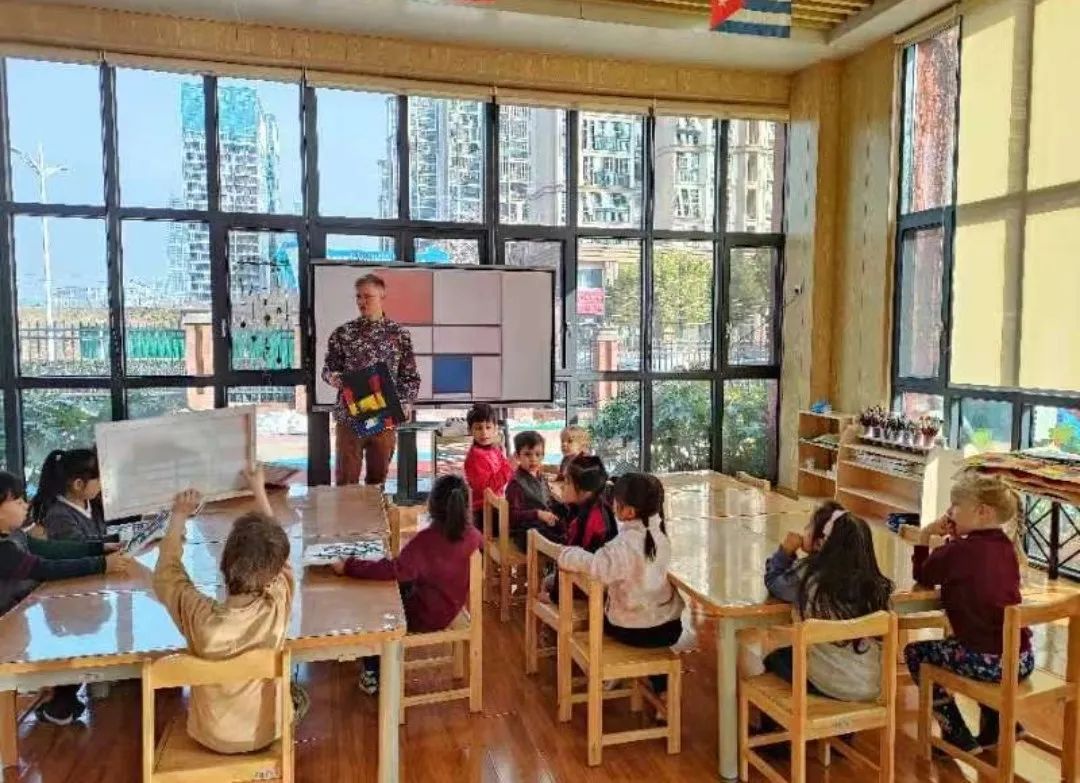
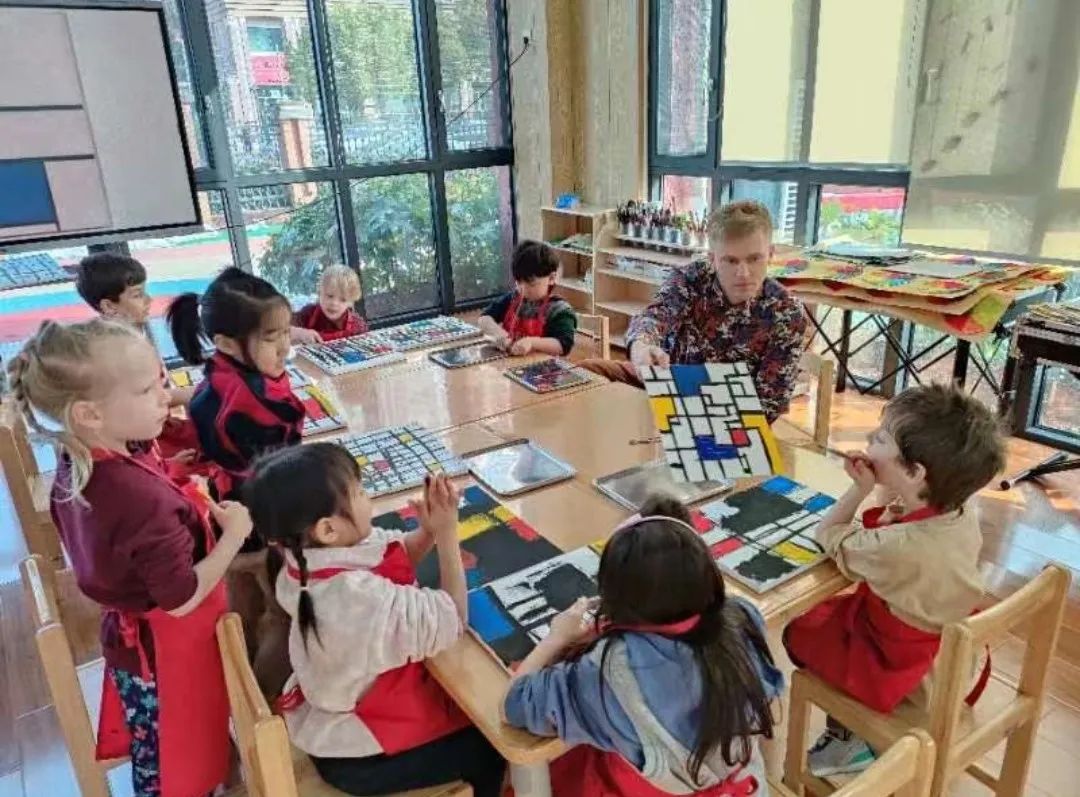
Grade 1 (Katija Bogdanic)
This week we continued our Mary Blair inspired castle prints by adding color to our geometric towers. Students were asked to create different patterns with oil pastels, using warm and cool colors. We read Sky Color by Peter Reynolds and painted the sky for our castle prints using acrylic paint.
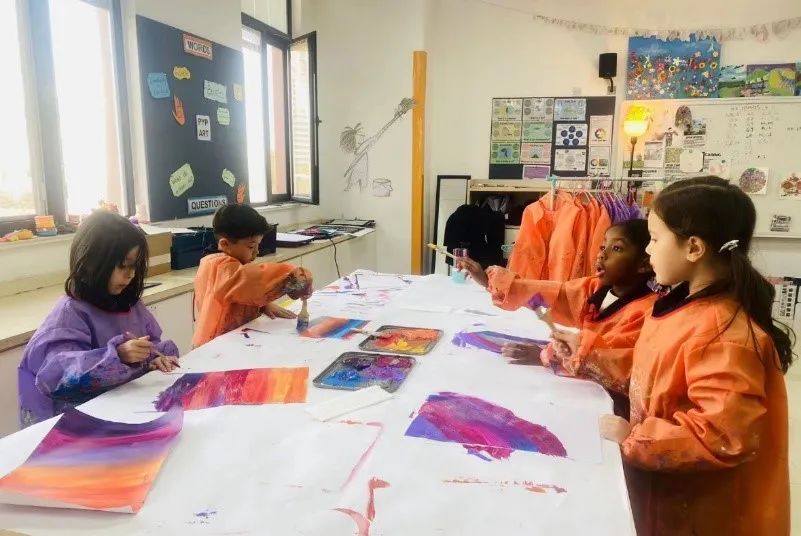
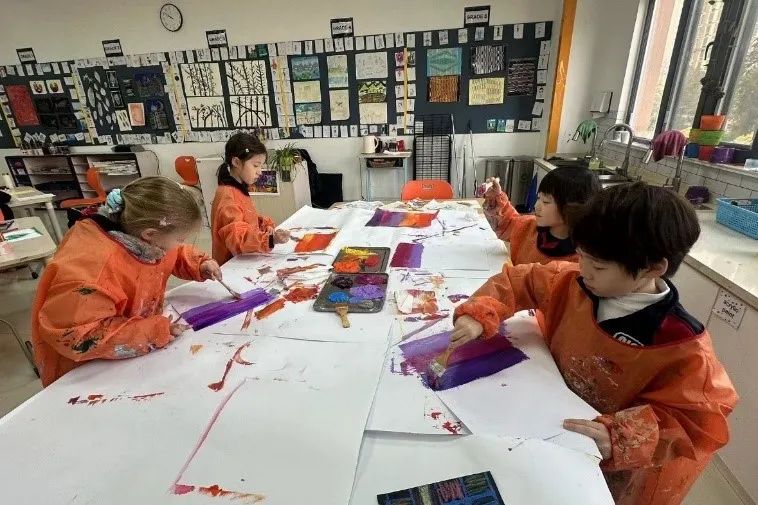
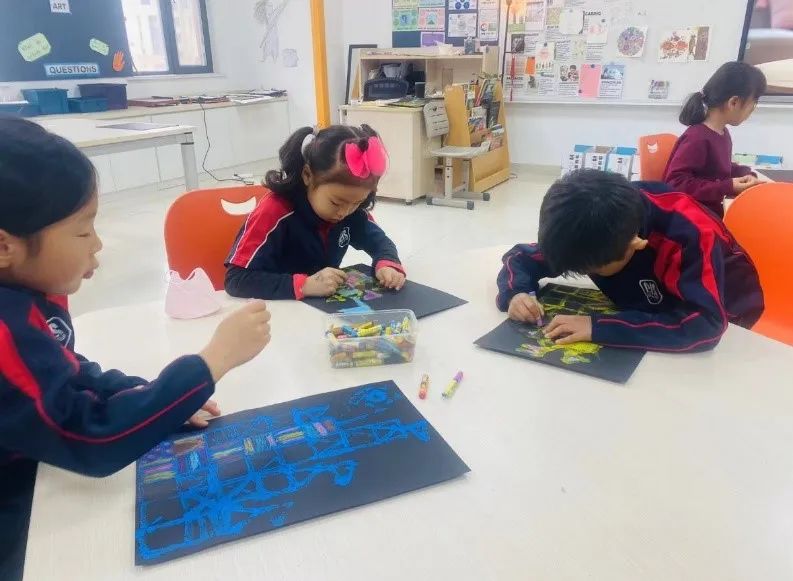
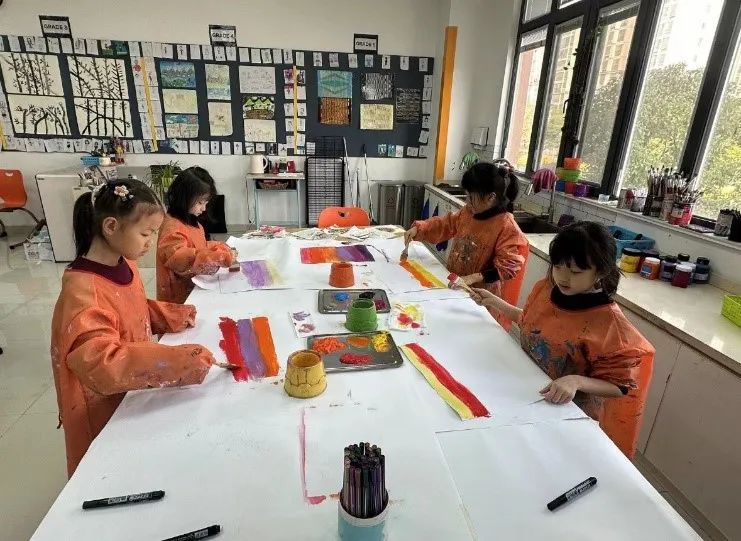
Grade 2 (Katija Bogdanic)
This week we finished our practice zentangles in our sketchbooks and started our final project on large paper using black marker. Students were asked to use the practice zentangles from their sketchbooks in the final project. Students were mindful of their focus and state of zen while creating intricate patterns.
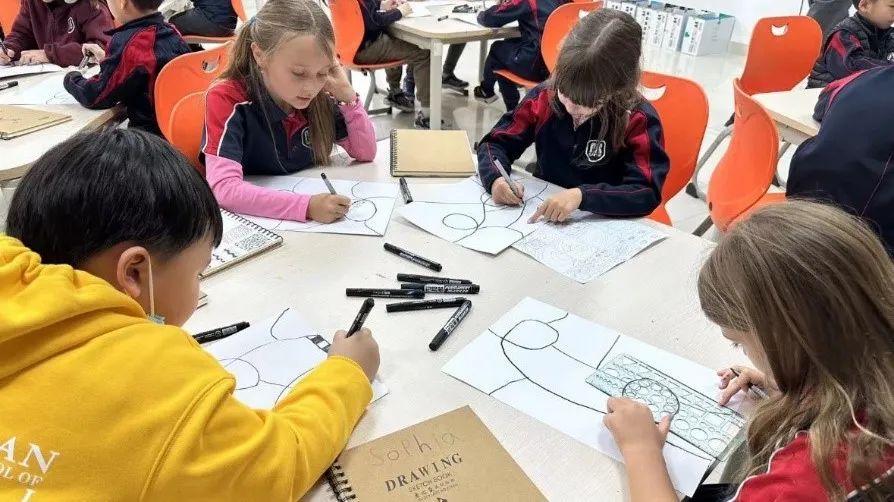
Slide pictures to see more
Grade 3 (Katija Bogdanic)
This week we began to construct the form of our “lost thing” sculptures using the sketches and drafts we created last week. Students used bubble wrap, aluminum foil, plastic bottles, and newspaper to build the bodies of their “lost thing” sculptures.
Slide pictures to see more
Grade 4 (Katija Bogdanic)
This week as we are wrapping up our stop-motion video project we are being mindful of editing our movies and recording our scripts for the audio. Students are adding sound effects and music to complete their movies.
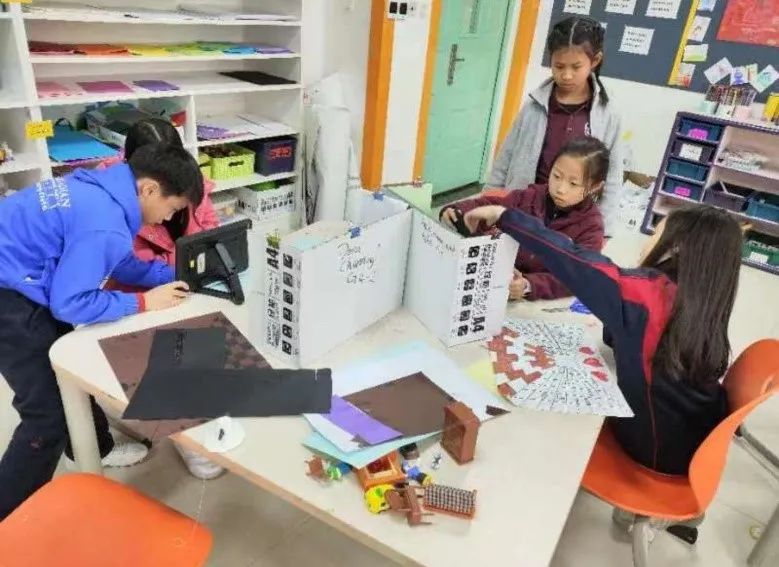
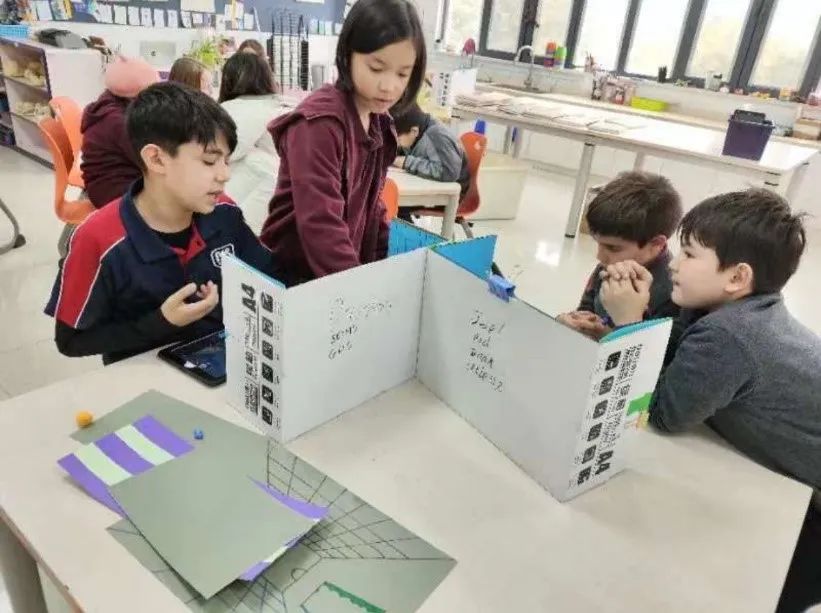
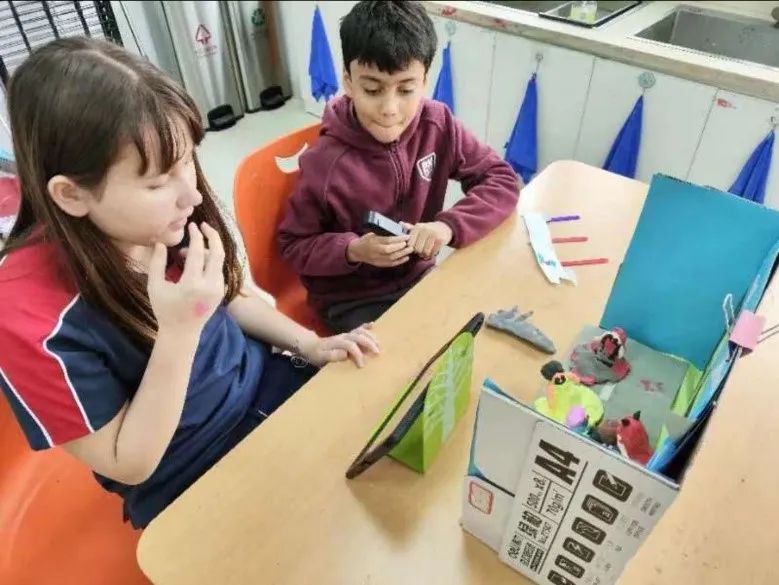
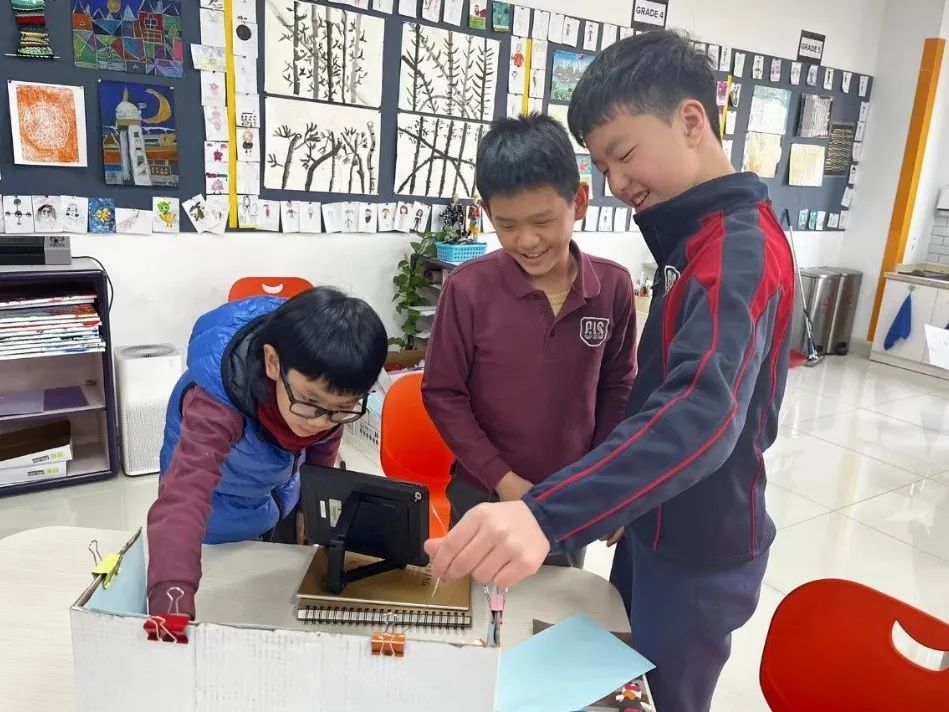
Grade 5 (Katija Bogdanic)
This week we merged the PYPX project with Visual Art class. Students worked on the visual elements of their projects using art class materials, resources, and support. On Friday we will be using art class time to see the Grade 10 Personal Projects showcase.
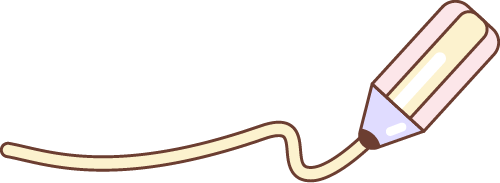
Grade 6 (Roxane Joubert)
This week, our students continued their study of 'Communities and Visual Expression.' With a focus on Indian woodblock printing, students used their understanding of pattern and repetition to create vibrant and wholly unique prints for Criterion A. For the latter part of the week, Grade 6 was introduced to the intricate art of Mehndi, a traditional form of body art practiced in countries such as India, Pakistan, the Middle East, North Africa, and other South-East Asian countries. Mehndi is a plant-based Henna dye is used to stain the skin with patterns, traditional motifs, and symbols.
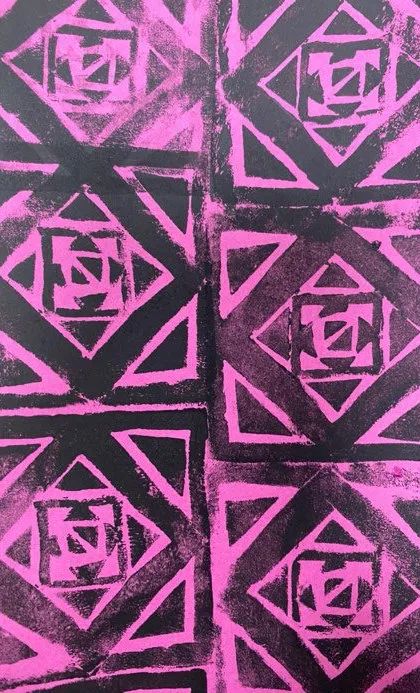

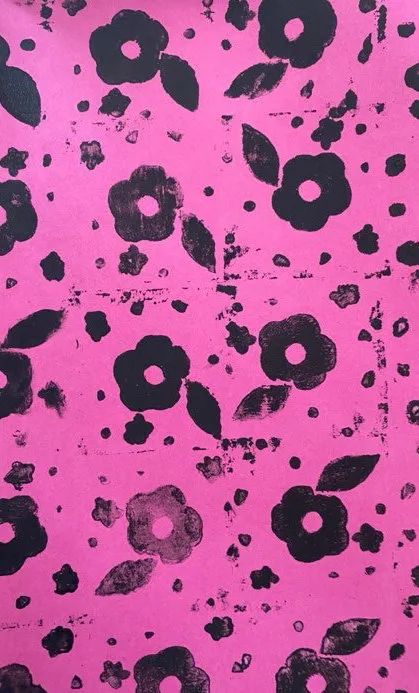

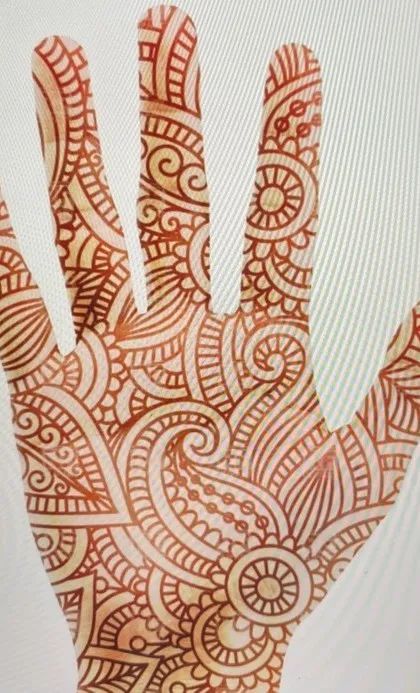
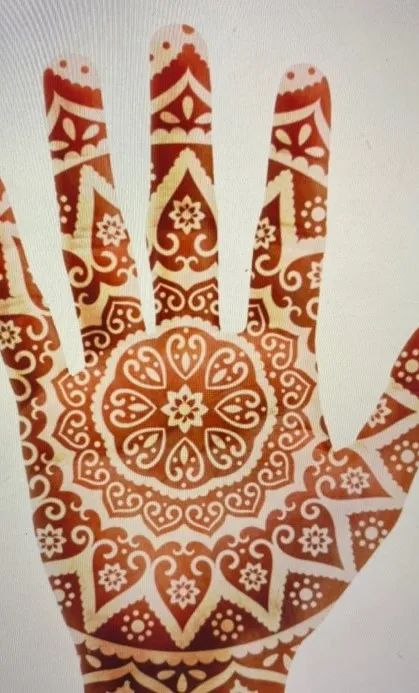
Grade 7 (Roxane Joubert)
As we continue to study and reflect on the impact Pop Art and iconography, Grade 7 began the active creation of artworks based on their research and understanding of the halftone printing process. Using technology and photo manipulation techniques, we experimented with this graphic effect to create fun digital portraits students can use to inform their upcoming summative assessments.

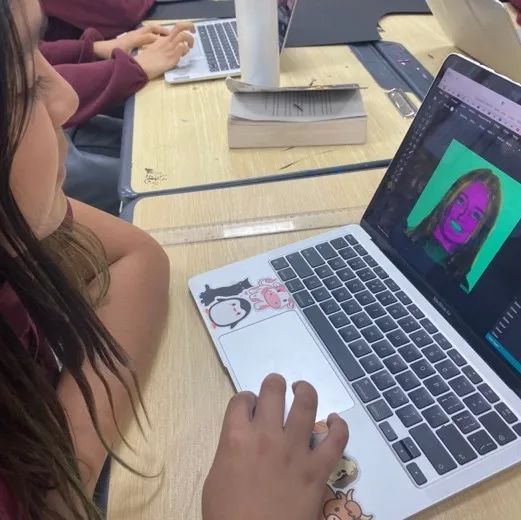
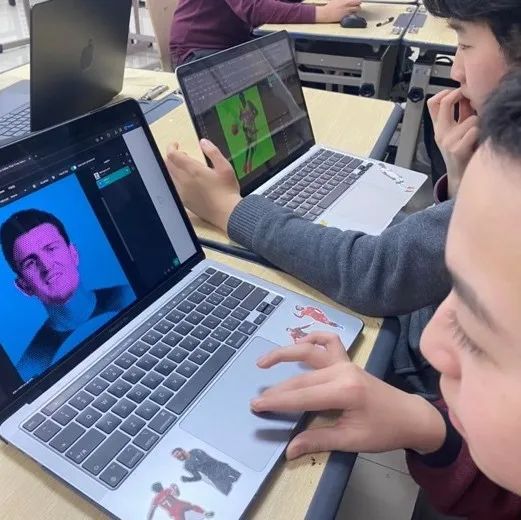

Grade 8 (Roxane Joubert)
With their teams assesmbled and scripts ready for their upcoming performance, Grade 8 can now forge ahead constructing their A4-sized shadow puppets out of the unit’s prescribed materials. Some students experimented with colour transparencies whilst other focused on articulation and engineered movement. The aim of this unit is to challenge their collaboration skills and ability to use their creative problem-solving skills to mitigate unforseen challenges.
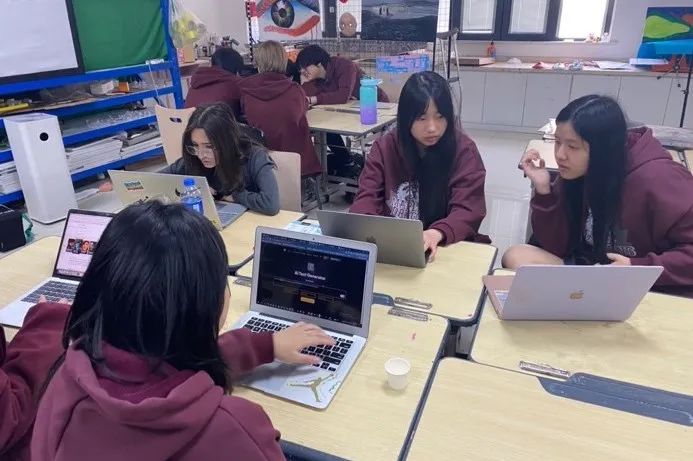
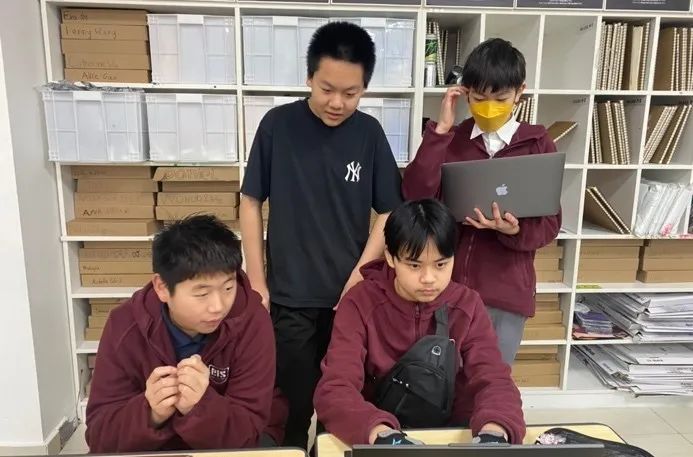

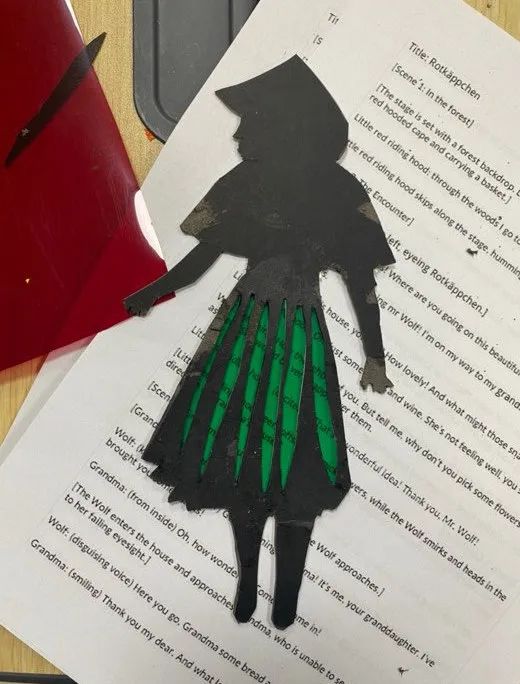
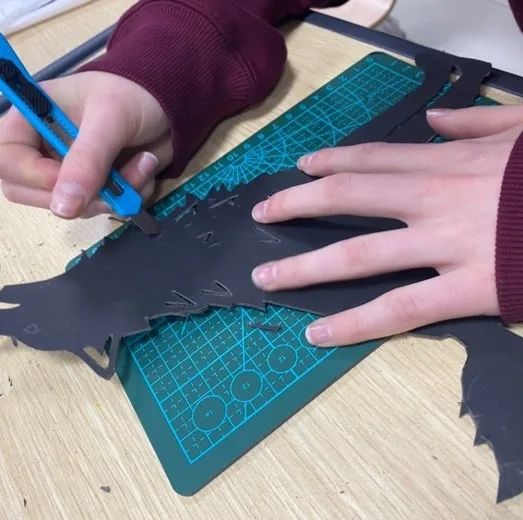
Grade 9 (Lucian Stefanescu)
Impressionist paintings are today among the most admired of all artworks. They are the pride of every private and public collection. As a rule, they offer a visual feast, and posses a magic of their own that captivates the more and less experienced art lover alike. Impressionism represents the grand finale of a particular way of appropriating the world through painting or drawing. This method often termed realism, evolved in Europe in the dawn of the modern era and it was anchored in a tradition dating back to Antiquity. But Impressionism also established various features that were preconditions and characteristics of 20th century modern art, and by its almost instantaneous global influence, it became a turning point in the history of visual arts.
During this unit, students will study the historical, social and cultural context in which Impressionism appeared and developed. They will understand the reasons and consider the influence it had on subsequent art movements and on the modern art as a whole. They will develop their practical skills experimenting with new mediums while referring to the Impressionist painting techniques.
During this week Grade 9 students finalized their research and started working on their sketches of ideas for their Impressionist painting.
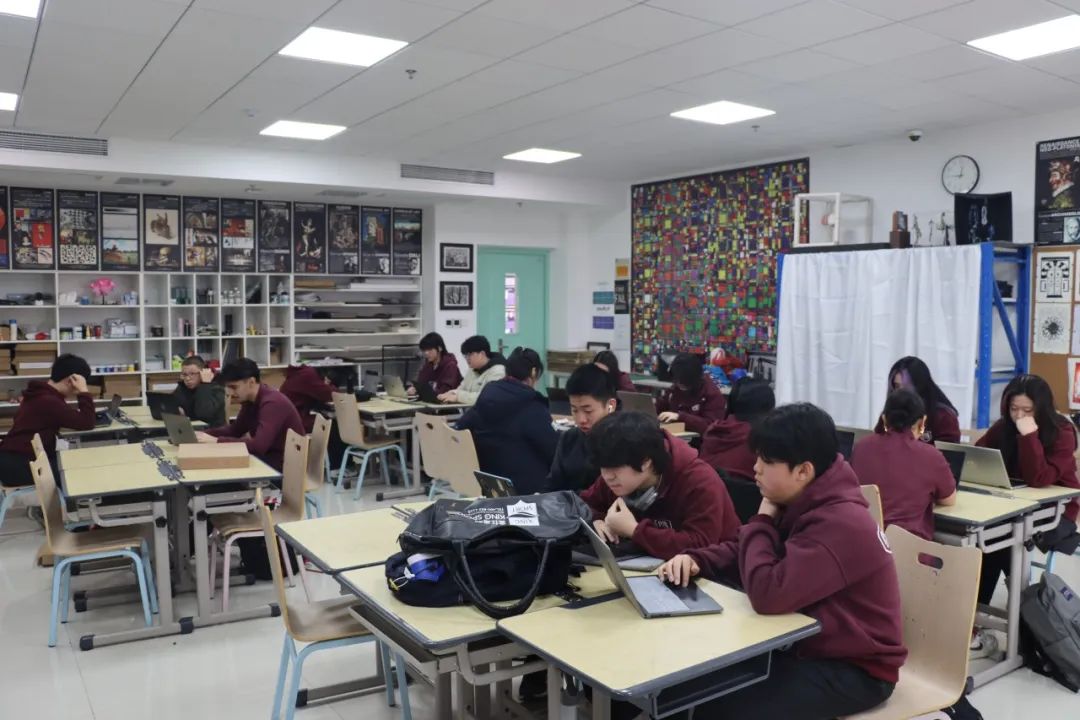
Grade 10 (Lucian Stefanescu)
Founder of the Metaphysical Art movement, Giorgio de Chirico was one of the most influential artists of all times. Never achieving the fame of a Leonardo da Vinci, Pablo Picasso or Salvador Dali. he nevertheless had an immense influence on the later and the art movement he brought to fame, Surrealism. Although distinctive in style, both movements share a dreamlike and often vaguely threatening, mysterious quality of a “painting that which cannot be seen” as coined by Roderick Conway Morris. During this unit Grade 10 students will solicit and expand their ability to represent their dreams through visual analogies and metaphors.
During this week Grade 10 students finalized their research and started working on their sketches of ideas for their final painting.
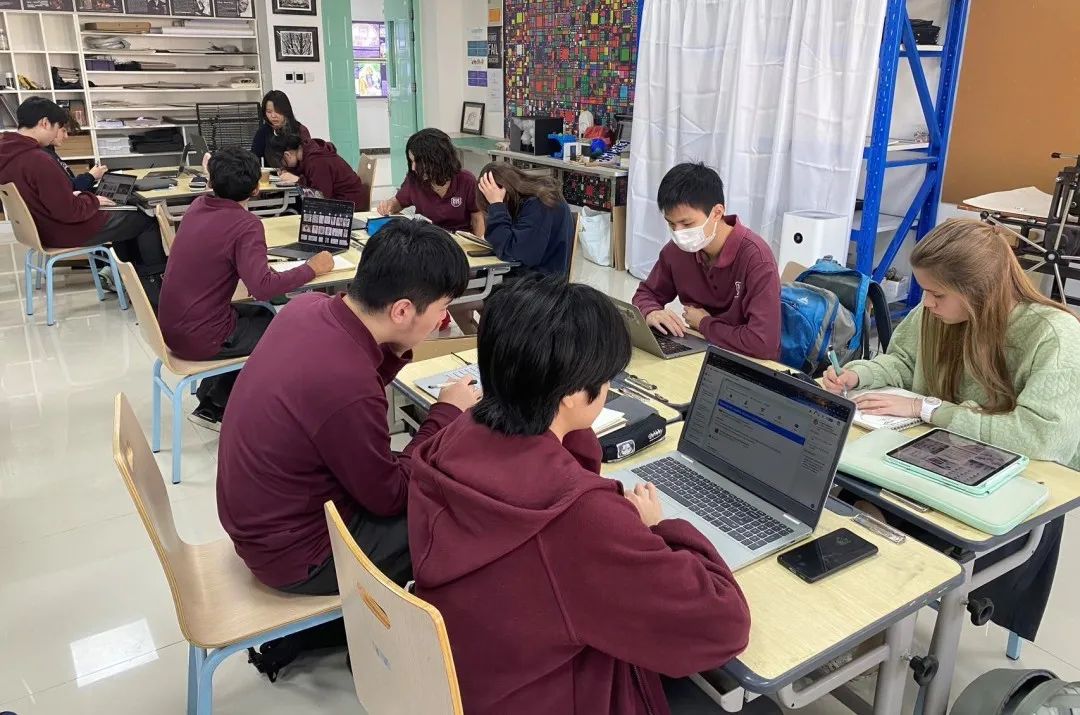
DP (Lucian Stefanescu)
In New Brunswick Programme, our student started preparing her pieces for her final exhibition.
Music Class
Pre-K (Darren Bayotlang)
"Riding the Musical Roller Coaster" was a fun activity with the Pre-K! They loved using the parachute to express the highs and lows of musical notes and the different speeds of tempo - a truly interactive and fun way to learn music.
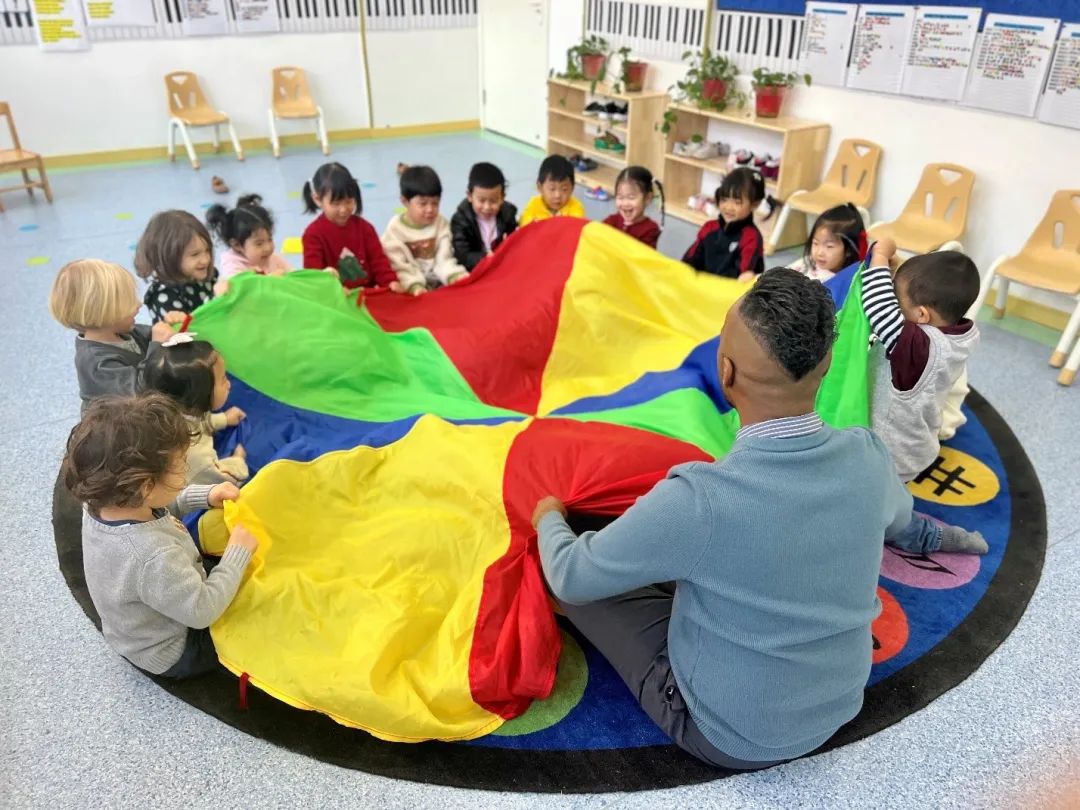
K1 (Darren Bayotlang)
This week, K1 students engaged in a fun parachute song, “ Ridin’ A Roller Coaster “. This activity is tied to the unit of inquiry 'How the World Works'. They explored the musical concept of pitch, distinguishing between 'high' and 'low'. Additionally, they recited the poem 'Two Little Sausages', emphasizing the use of 'high' and 'low' voices.
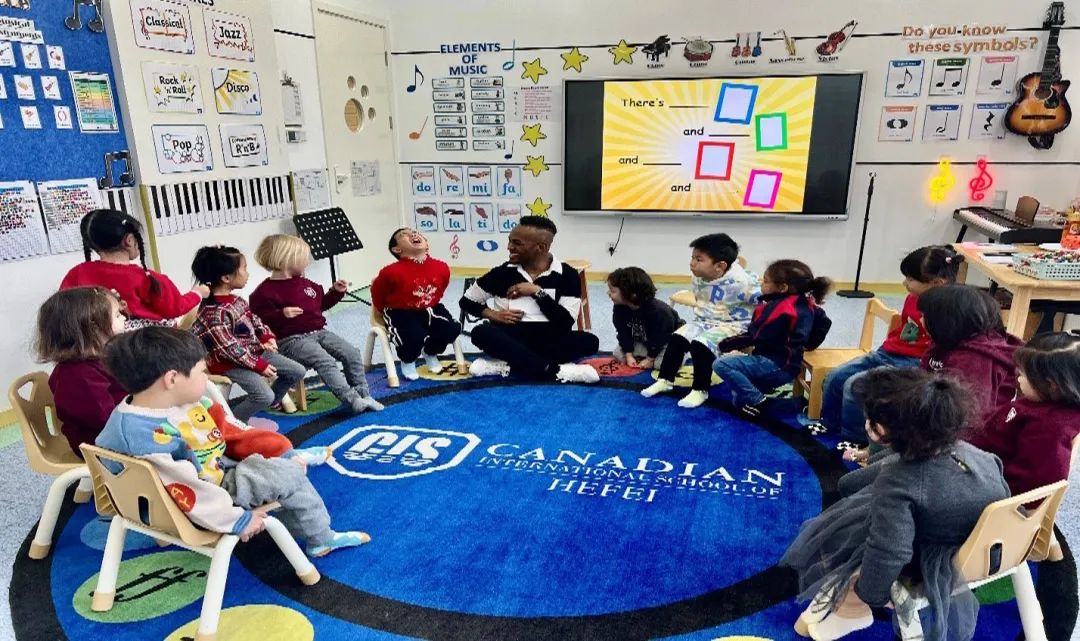
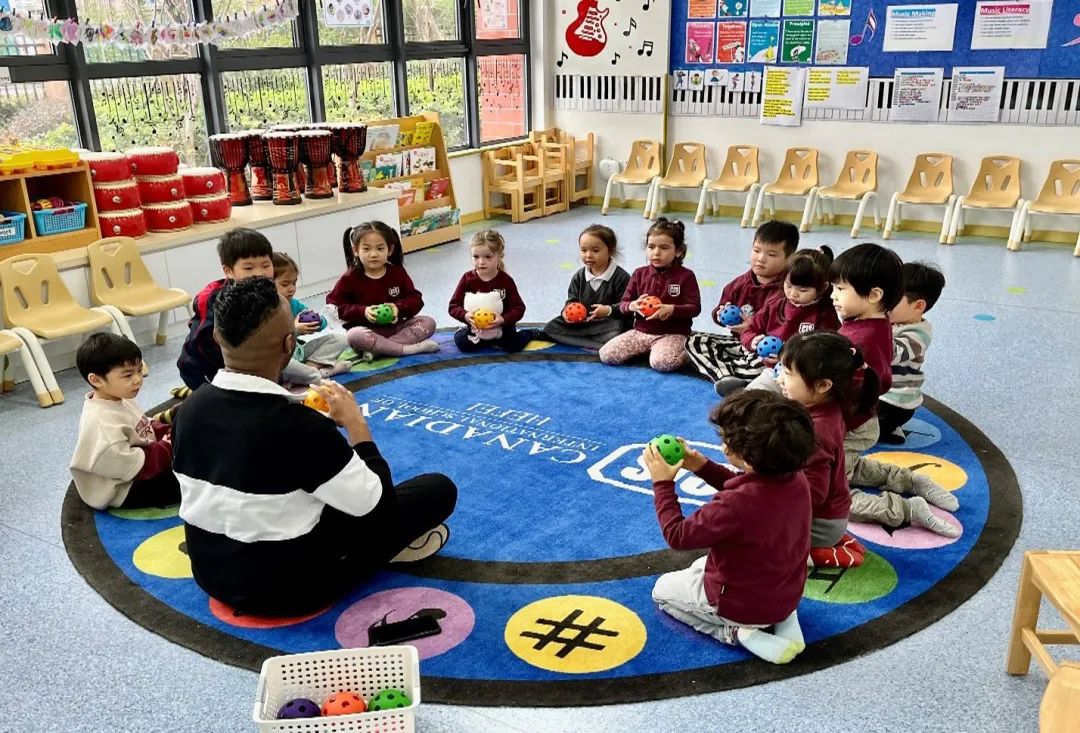
K2 (Darren Bayotlang)
K2 students explored rhythm, dynamics, and accents with the poem "Two Little Sausages." They didn't just recite it, they also performed chants with different volumes. This helped them understand key music ideas better. They also got to work in groups with instruments. They were asked to play their instruments, “Shakers- Tambourine- Drum, “after each phrase to develop their cooperation and coordination skills.
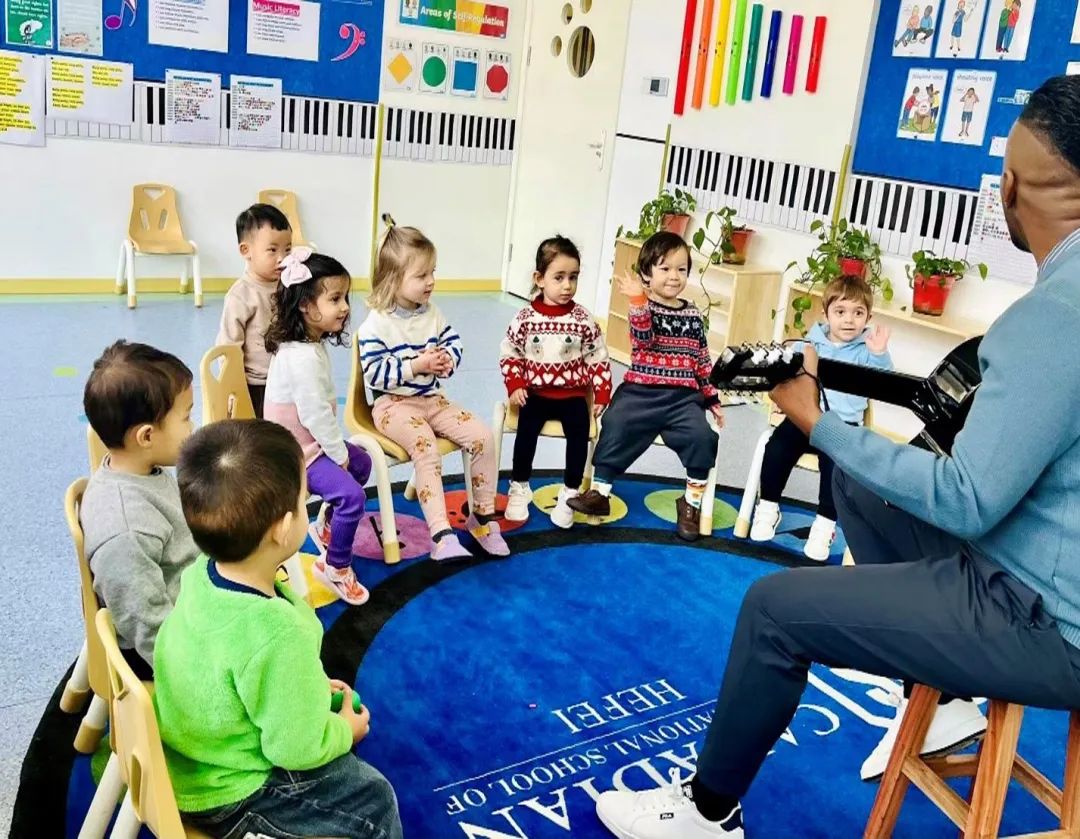
K3 (Darren Bayotlang)
This week in our music class, K2 students explored engaging activities focused on musical timing. We played the imaginative game "Sally got round the sun", where we tossed an imaginary sun with our hands on the rhythmic cue "Boom". We also moved to the beat during a fun chant and danced to the fun song "Go Bananas". The students did a great job demonstrating their understanding of timing and rhythm. Great work, K3 students!
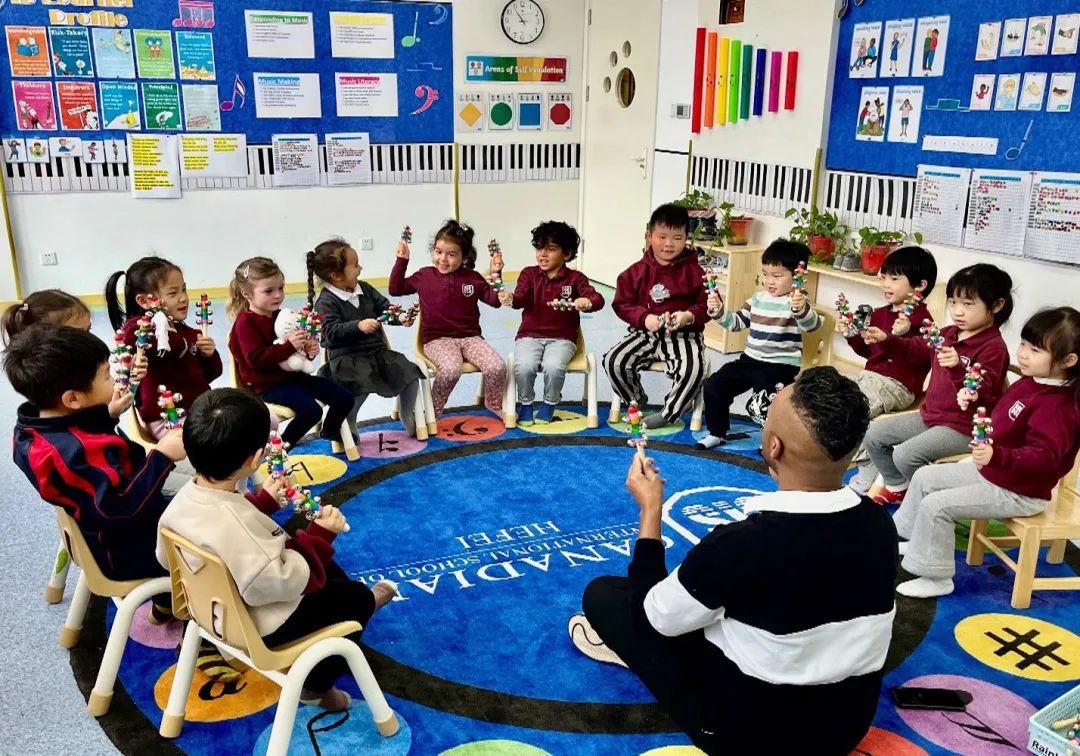
Grade 1 (Snow Boudreau)
This week in G1, we continue to learning about the orchestra. We reviewed what we had already learned about the string and woodwind family and practiced our knowledge of the woodwind family with our woodwind practice page and a game. This week we learn about the bass family, each student introduces their favorite musical instrument and tells why. We also talk about traditional orchestra from different country.
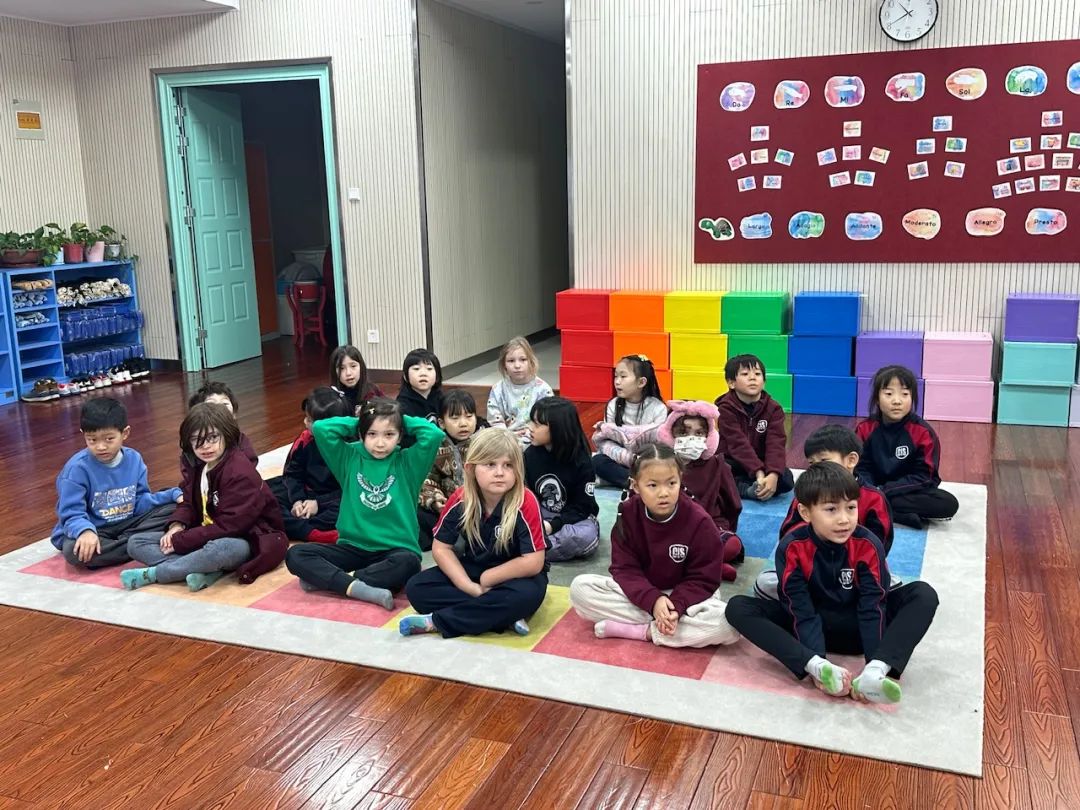
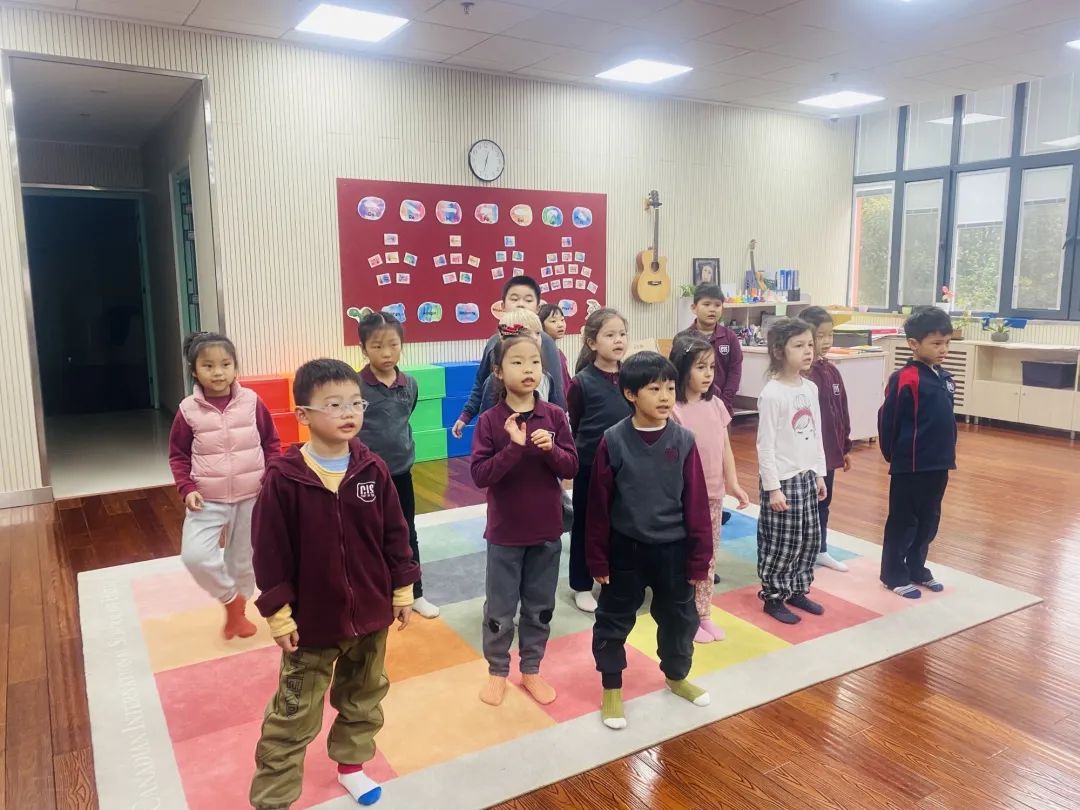
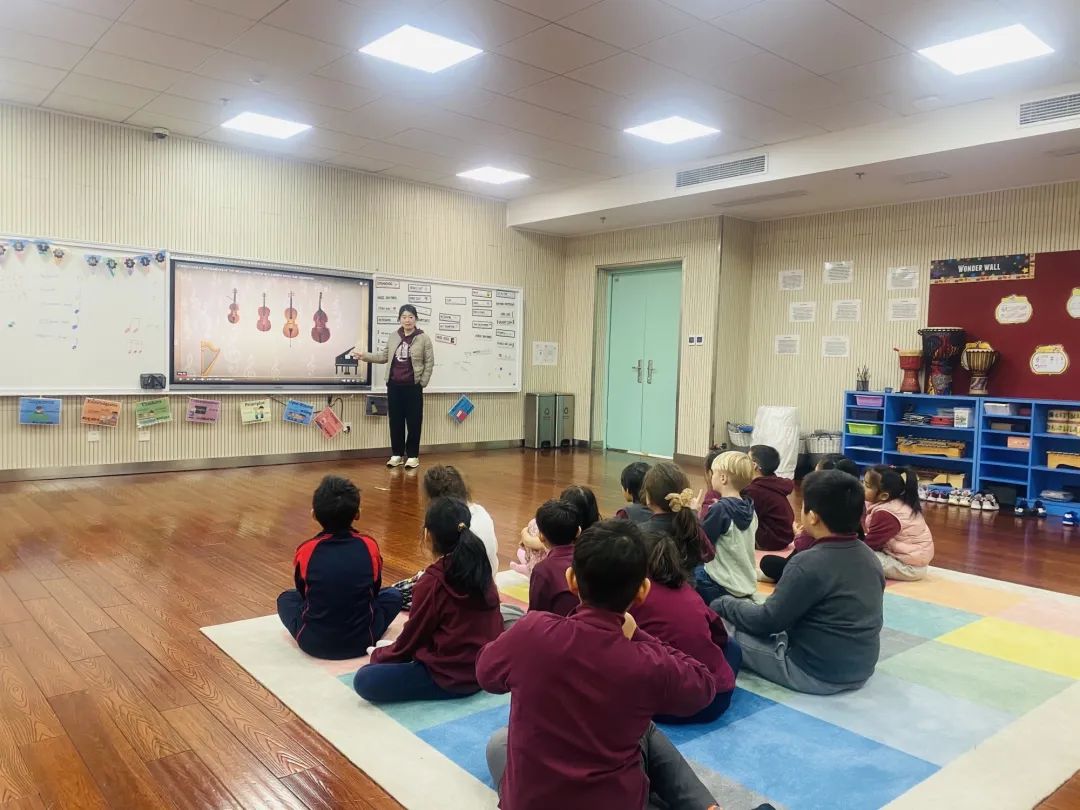
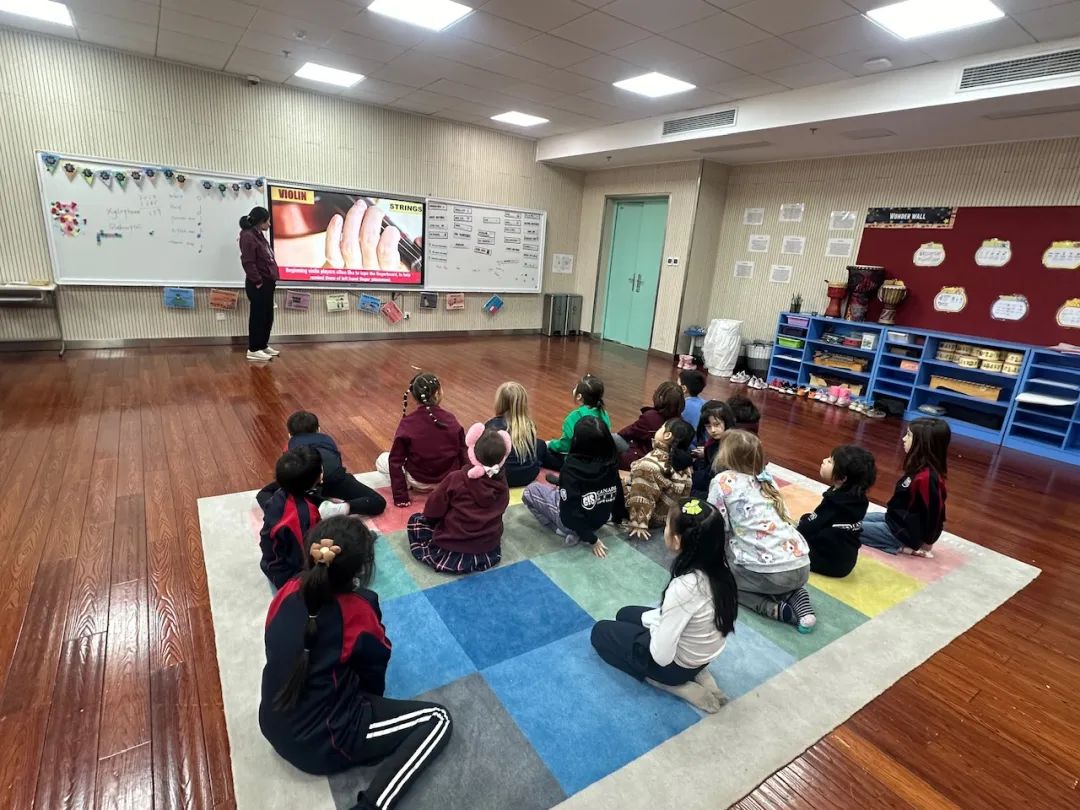
Grade 2 (Snow Boudreau)
This week in G2, we reviewed what we had already learned dynamics and rhythm. Students have been demonstrating proficiency with dynamics by moving to, playing, we are learning about the orchestra, the string and woodwind family and practiced our knowledge of the woodwind family with our woodwind practice page and a game of instrument cards.
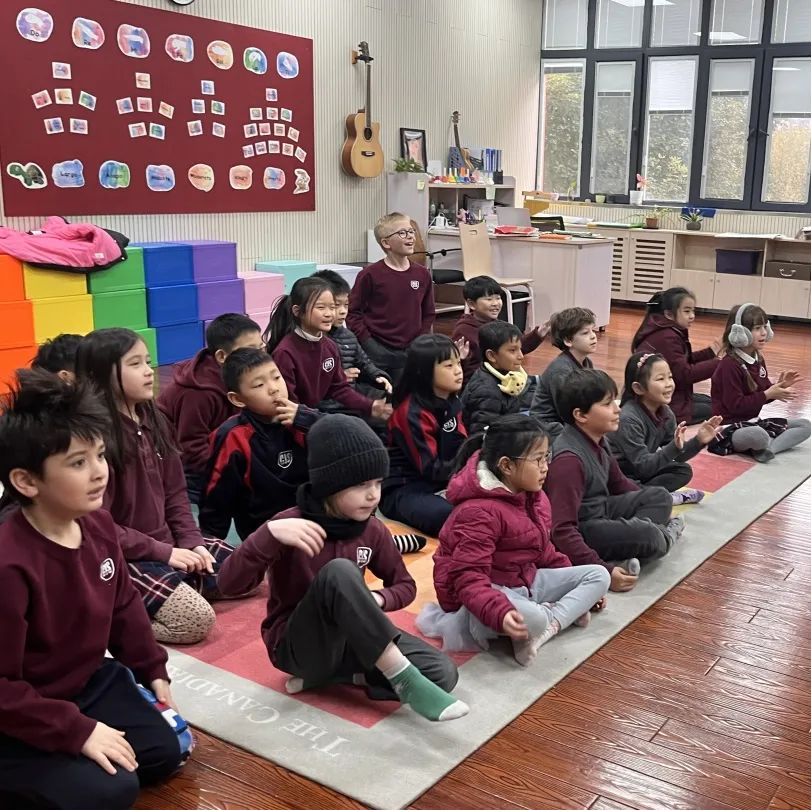
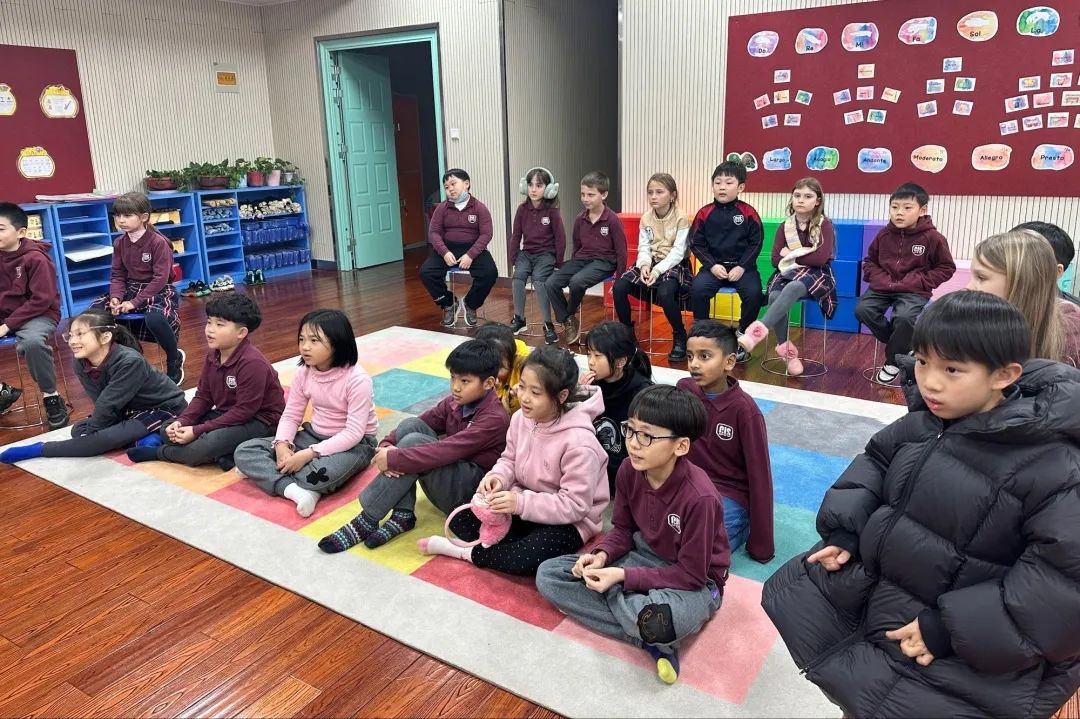
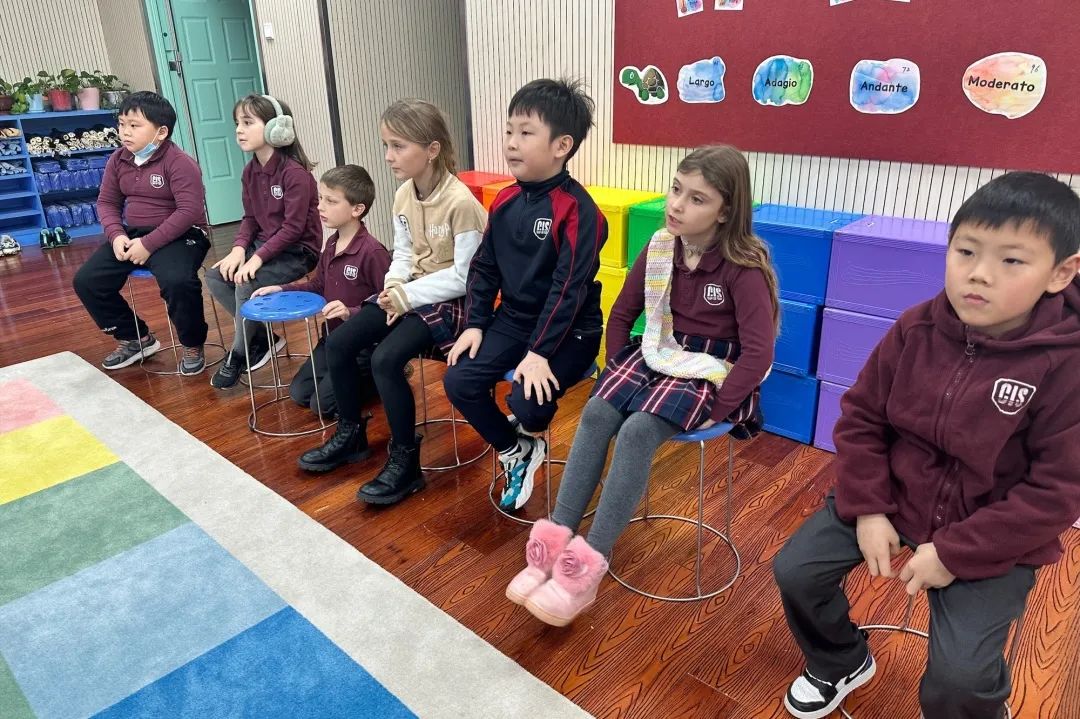
Grade 3 (Snow Boudreau)
This week in G3, we continue to learning about the orchestra. We reviewed what we had already learned about the string and woodwind family and practiced our knowledge of the woodwind family with our woodwind practice page and a game of instrument cards. we are learning about rhythm. Students were working on creating definitions for different elements commonly found in music such as rhythm, melody, form, etc.
Grade 4 (Snow Boudreau)
This week in G4, we organized a class concert, each student prepared a music work, which can be sung alone or cooperated with other students, all the hosts and blackboard layout were completed by the students themselves. we had a great time.
Grade 5 (Snow Boudreau)
This week in G5, we organized a class concert, each student prepared a music work, which can be sung alone or cooperated with other students, all the hosts and blackboard layout were completed by the students themselves. we had a great time.
Slide pictures to see more
Grade 6 (Jose Correia)
Grade 6 It's working the unit "Formal Elements of Music," The fundamental building blocks of music are loudness, pitch, duration (or rhythm), tempo, timbre, and reverberation. When combined carefully, they give rise to higher-level concepts such as meter, harmony, melody, and key. Thus, music differs from random sound in the combination of its basic elements and the relations that form between them. Let’s briefly define them.
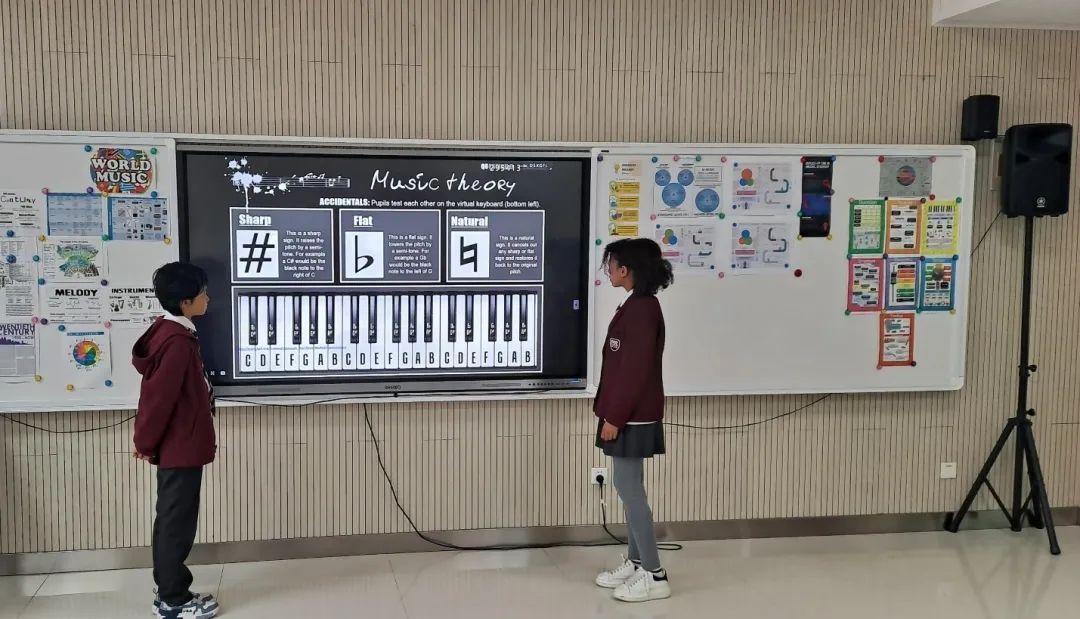
Grade 7 (Jose Correia)
Percussion instruments are found on every continent and in nearly every society around the world. Percussive traditions have shaped cultures and communities. Many percussion instruments in various countries are related, and therefore, musical evolution can be partially traced back through the instruments themselves and their cultural contexts. Communities are groups that exist in proximity defined by space, time or relationship. Communities include, for example, groups of people sharing particular characteristics, beliefs or values as well as groups of interdependent organisms living together in a specific habitat. Students will work on musical concepts as a large group and then will work on the concepts in solo and small groups. Students will be asked to demonstrate their musical skills by demonstrating thinking skills, communication skills, self-management and research skills.
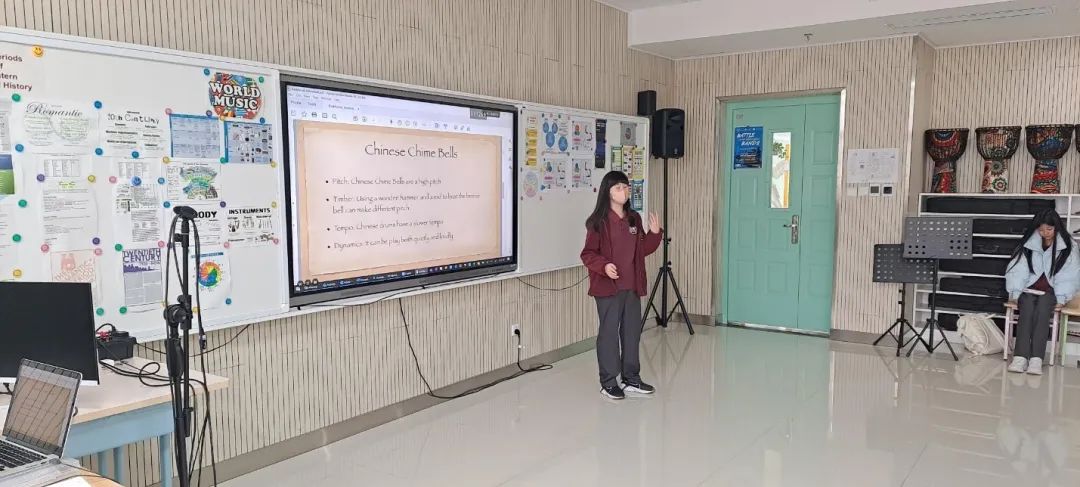
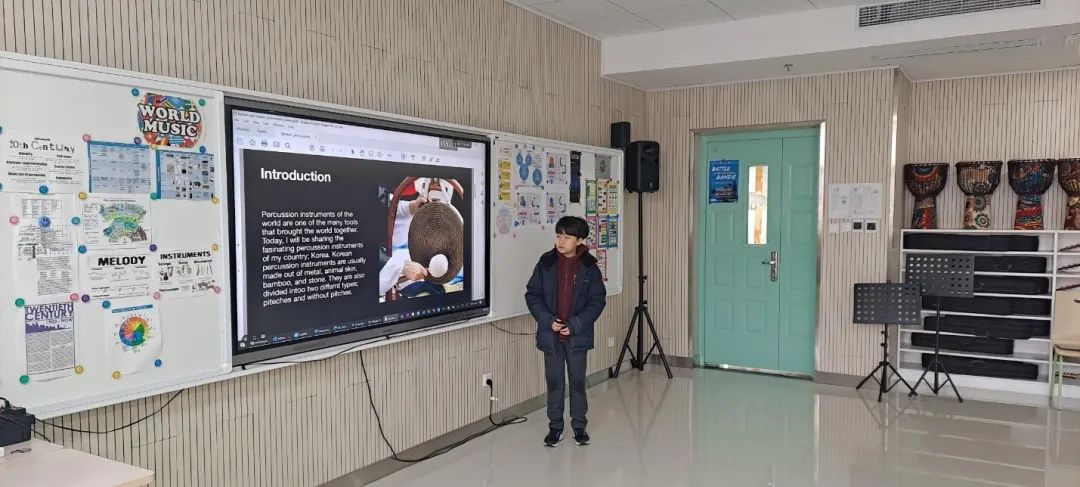
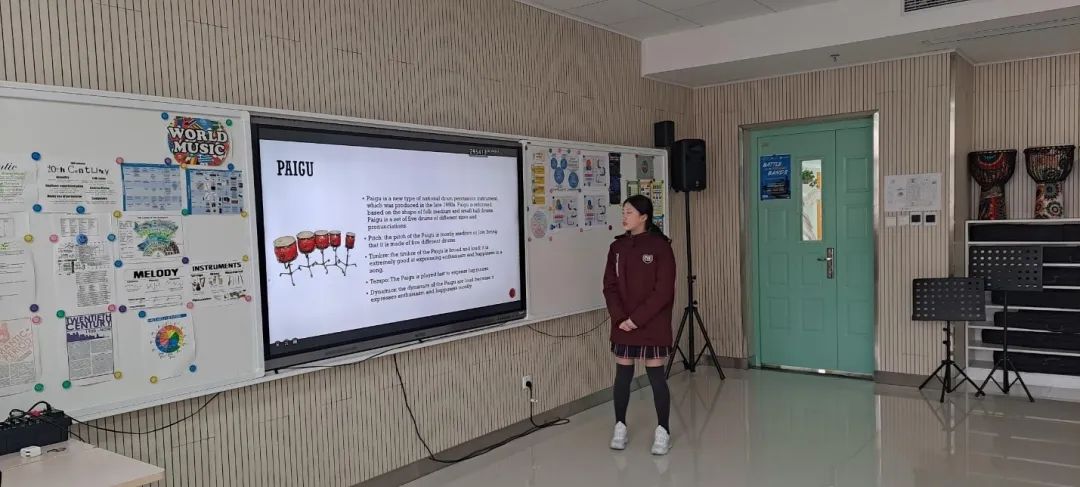
Grade 8 (Jose Correia)
The grade 8 worked on body percussion with harmony, in which they had to compose a harmonic sequence with melody, snapping fingers, clapping, chest, legs and vocal sounds, now they started to prepare a comedy performance.
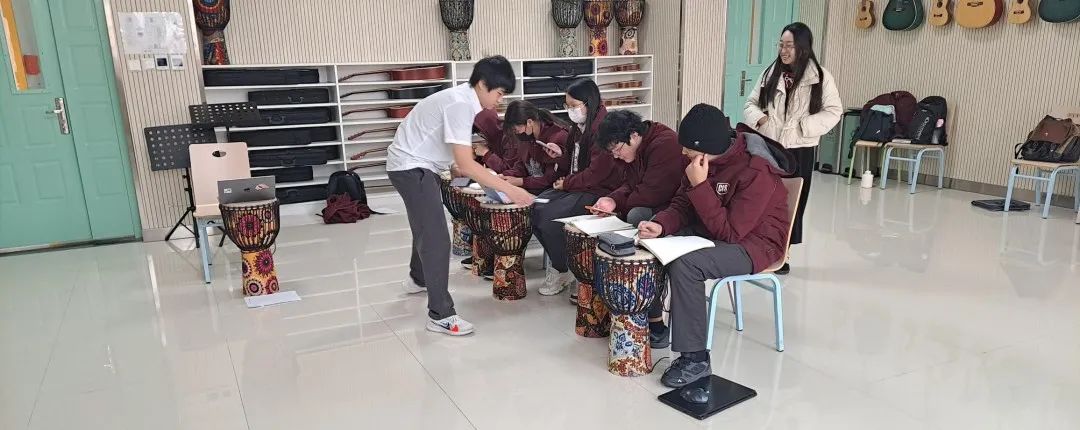
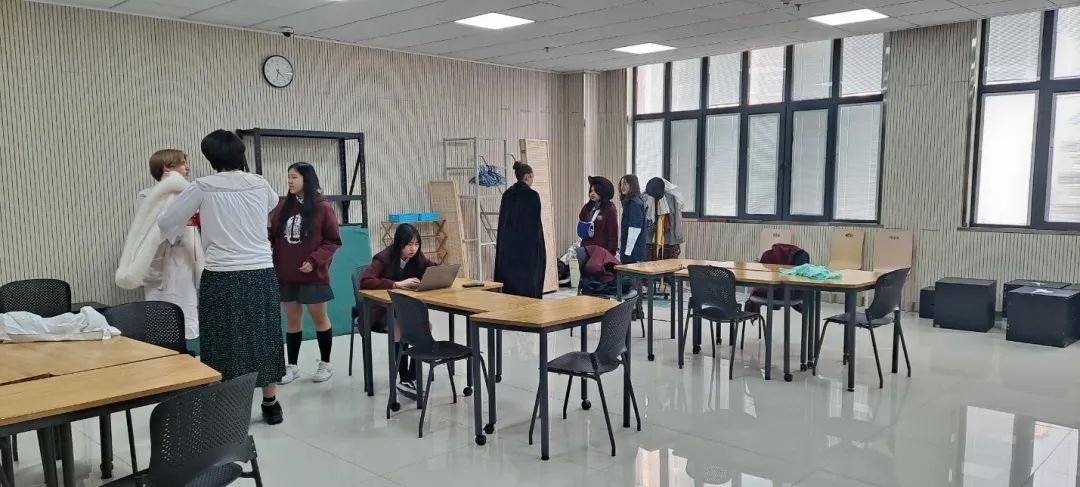
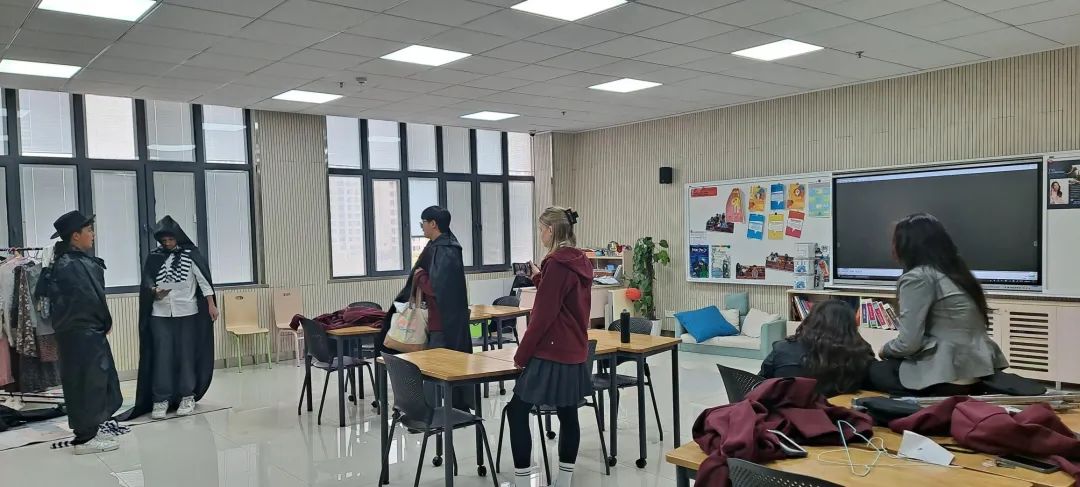
Grade 10 (Jose Correia)
They are working in the IB Areas of Inquiry (World Music for sociocultural and political expression, listening and performance, dramatic impact, movement and entertainment, technology in the electronic and digital age, At the moment they are working on musical sampling composition of a piece for performance.
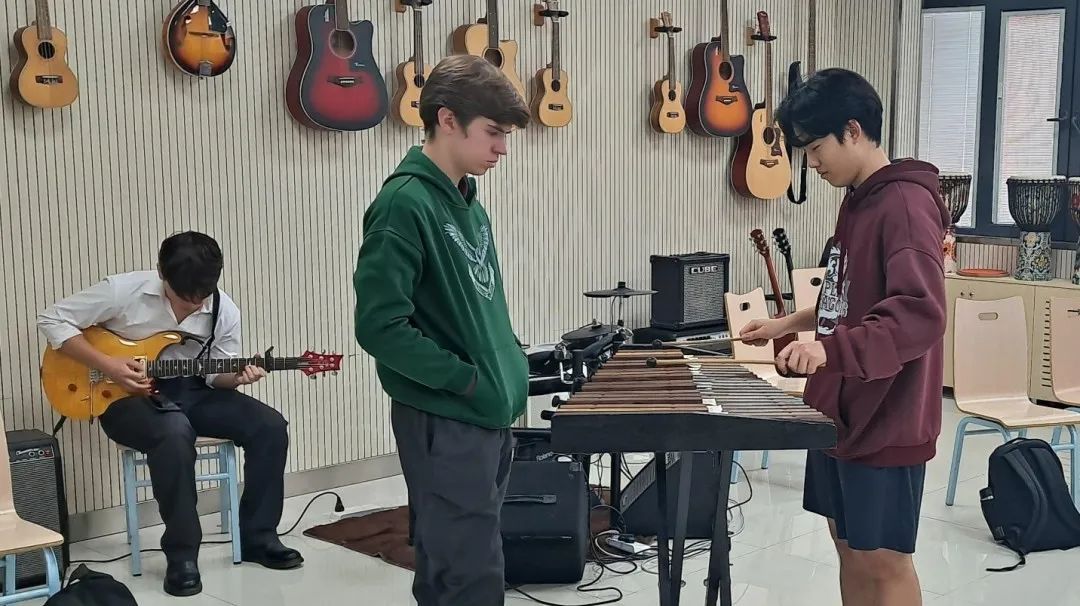
Drama Class
Grade 9 (Jonny Turvey)
This week in Grade 9 drama, students deepened their exploration of the Commedia Dell'Arte, focusing on its iconic stock characters. They engaged in dynamic pair work, where each duo performed 1-minute scenes embodying characters from the three pivotal groups: the masters, servants, and innamorati. This exercise not only enhanced their understanding of the distinct roles within Commedia Dell'Arte but also honed their improvisational and performance skills, fostering a deeper connection with the historical and cultural significance of this timeless theatrical tradition.
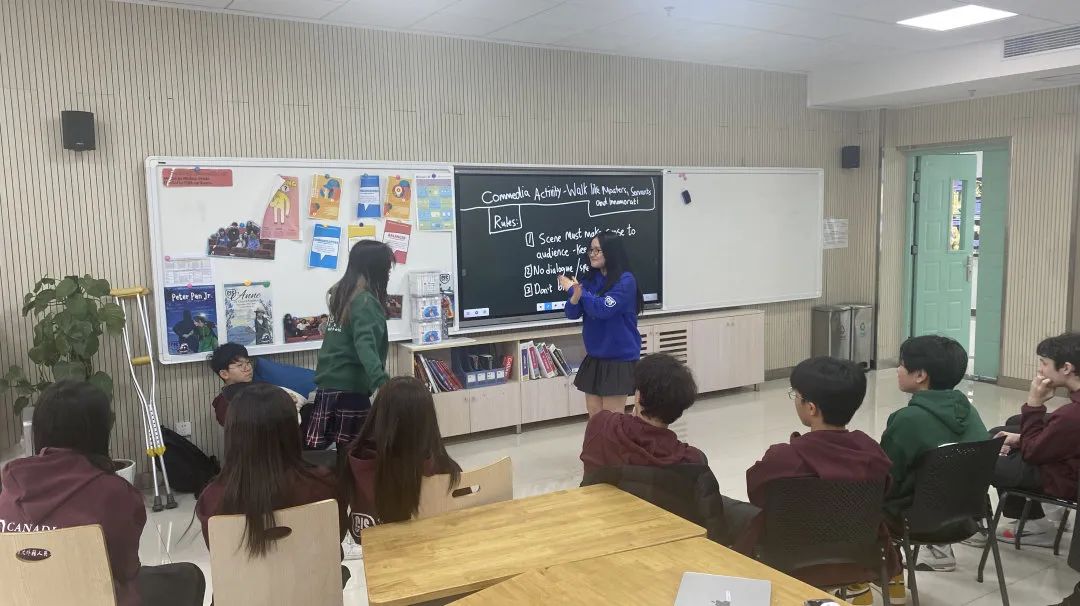
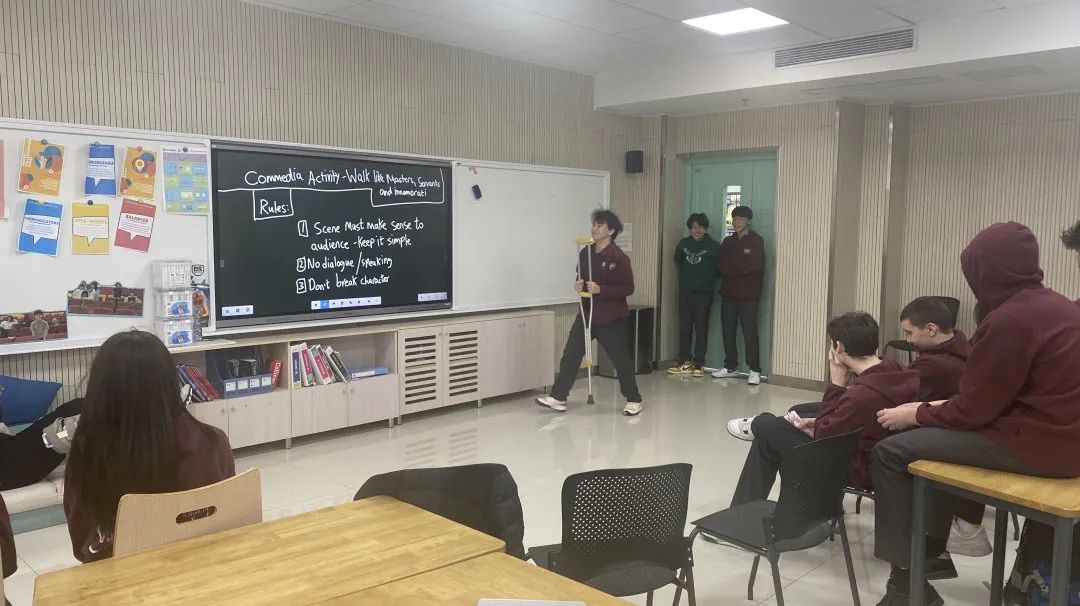
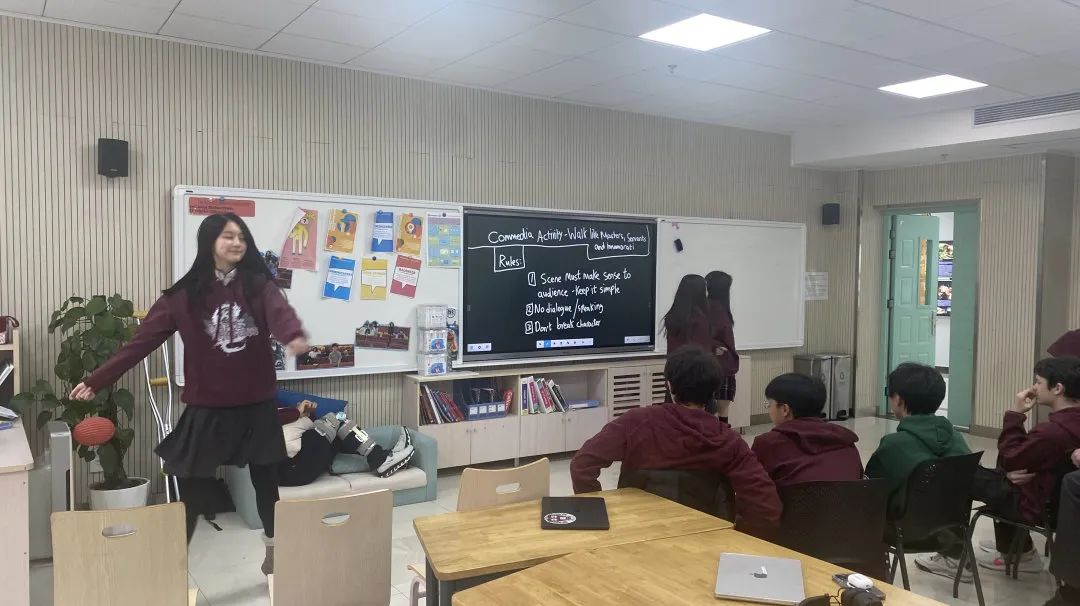
Grade 10 (Jonny Turvey)
This week in Grade 10 drama, students were immersed in the preparation for their Personal Project Exhibition, dedicating significant effort and creativity to showcase their individual talents and learning journeys. Amidst their busy schedule, they also managed to make noteworthy progress on their adaptations of famous works. This dual focus not only demonstrates their ability to balance multiple projects but also their commitment to both personal expression and academic achievement in the realm of drama. The students' adaptations, drawing from a variety of classic texts, are being creatively reimagined, highlighting their growing skills in interpretation, innovation, and performance.
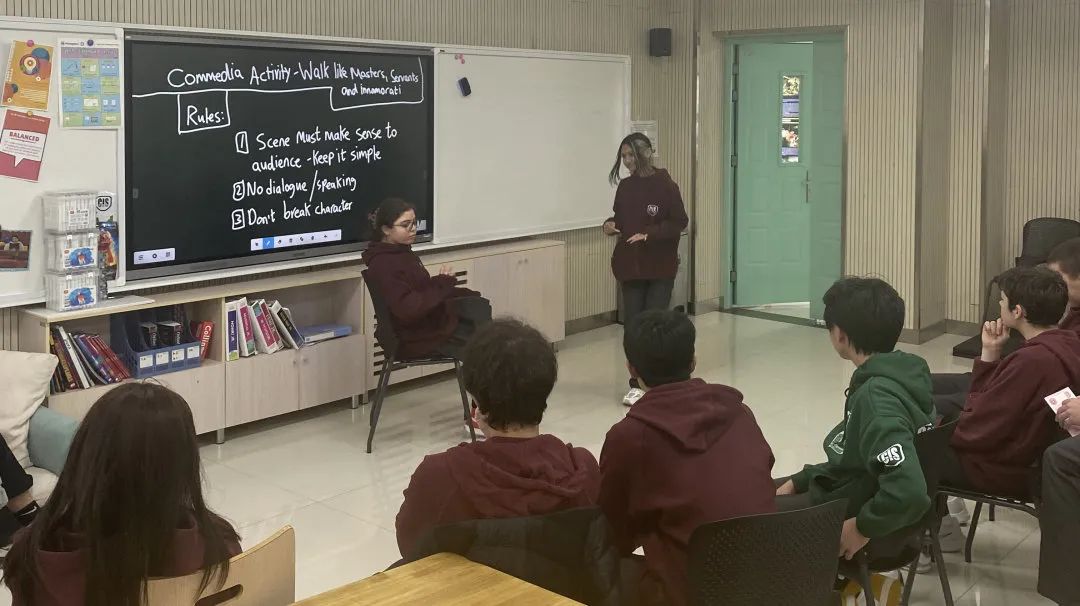
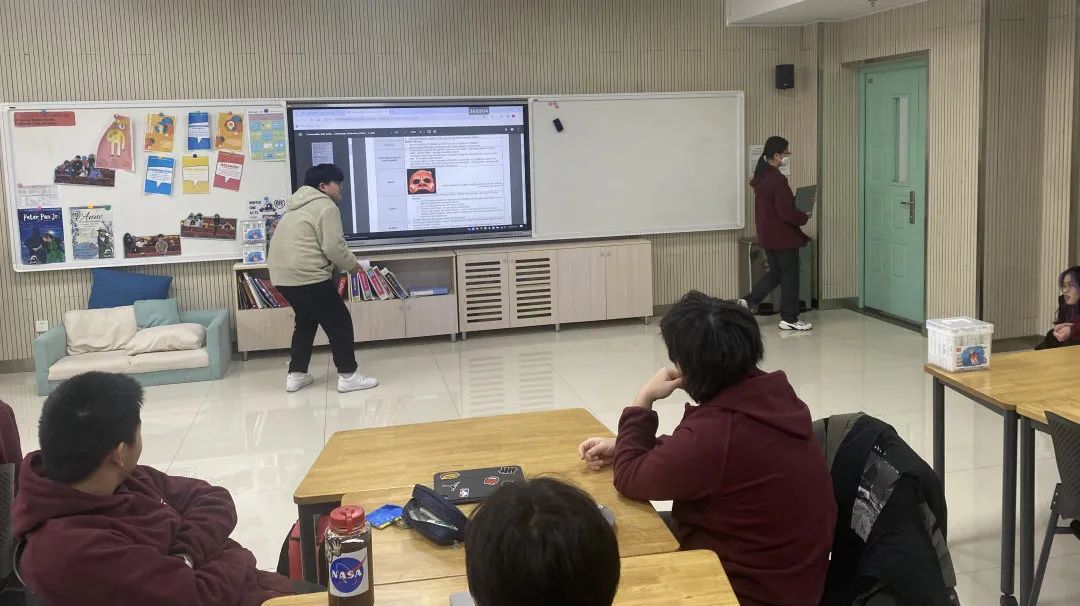
Science Highlights
CISH
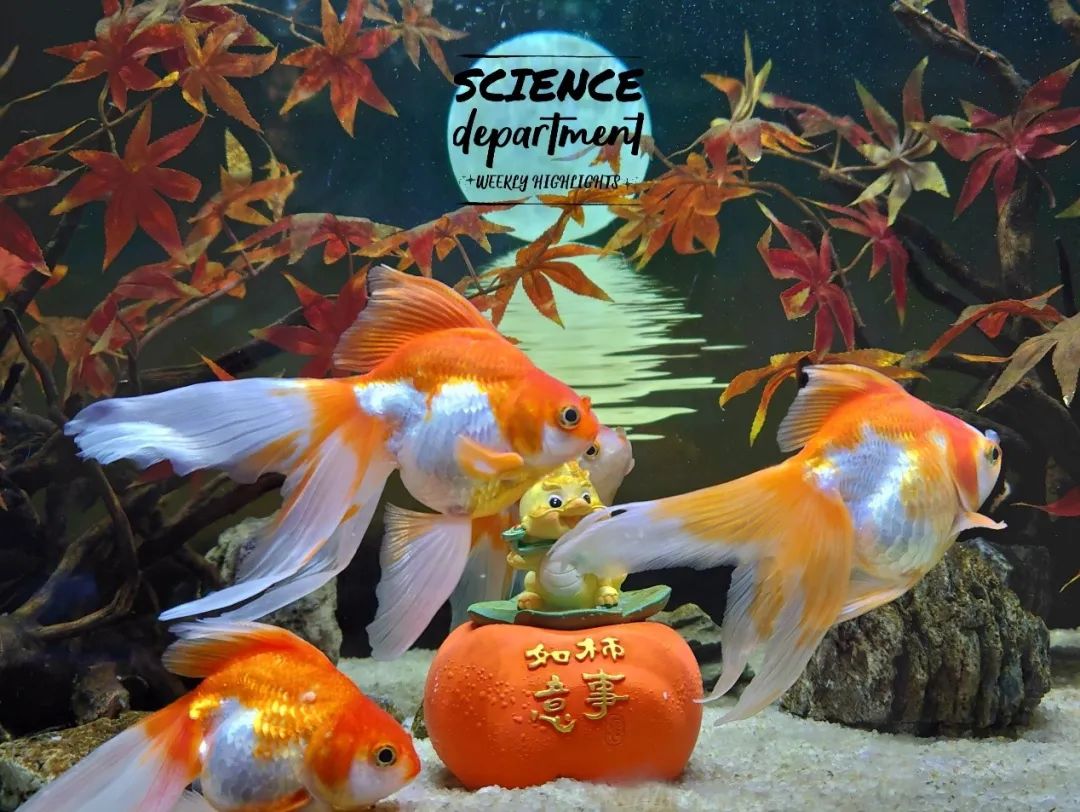
Grade 6 - Dr. Holger Meinberg
Firstly, students completed graphing and analysis exercises related to freefall, which illustrates accelerated movement. To ensure all students grasped the concept, those encountering difficulties with graphing received extra support during tutoring sessions.
Following this, students shifted their focus to the properties of air, including weight and volume. Through hands-on activities, they explored the relationship between volume and temperature, gaining insight into how these factors are interdependent. Additionally, students were introduced to the concept of weight force, area, and pressure. They practiced calculating these quantities, developing their mathematical and analytical skills in the process. To culminate the week, students constructed a model of the Magdeburg hemisphere and conducted experiments involving crushed cans to observe the tangible effects of air pressure. This practical demonstration allowed them to witness firsthand the impact of air pressure on everyday objects.
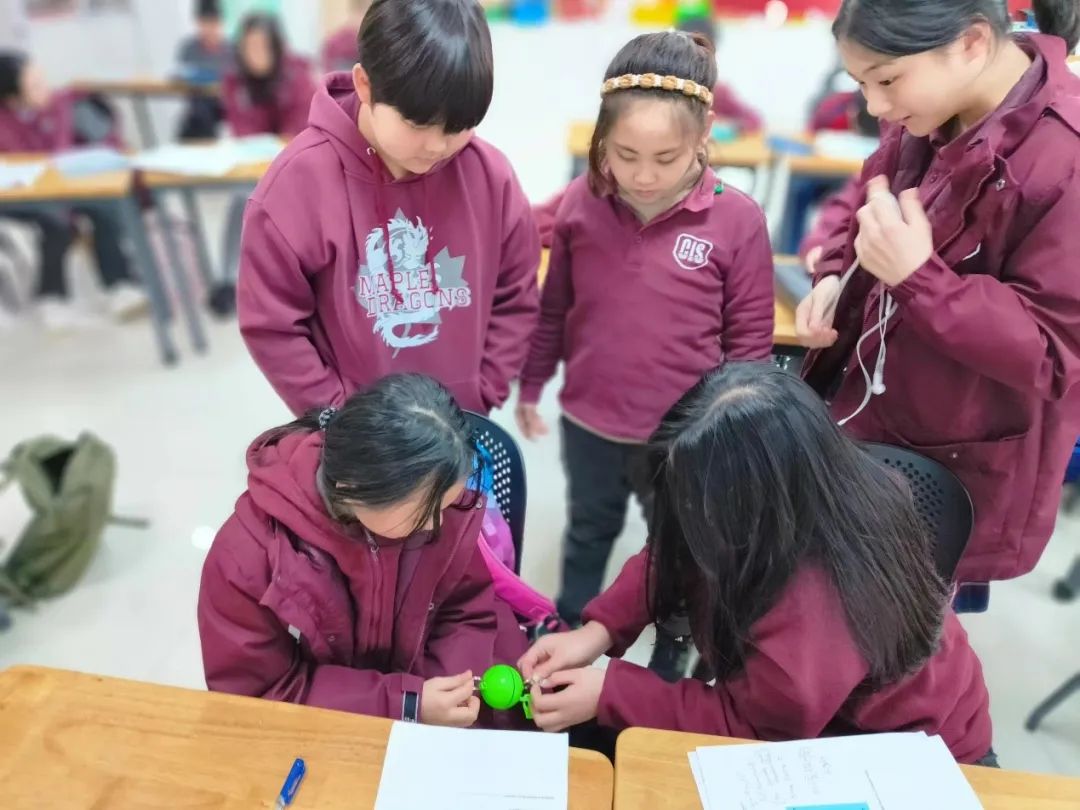
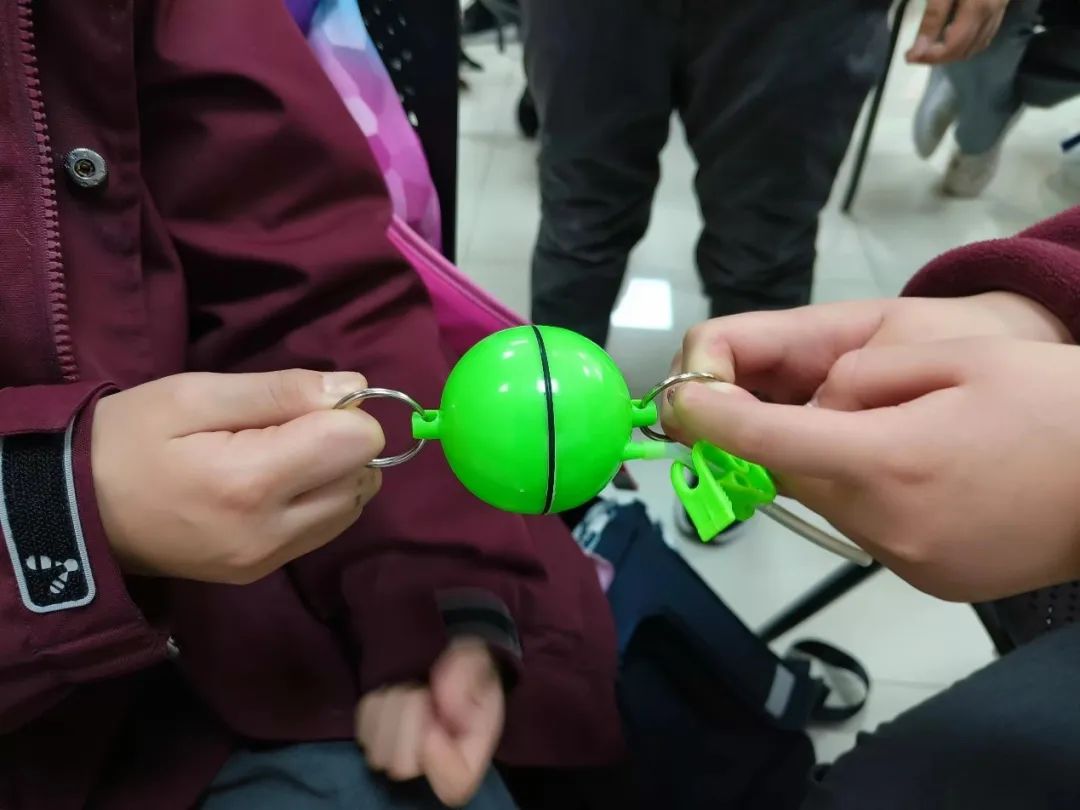
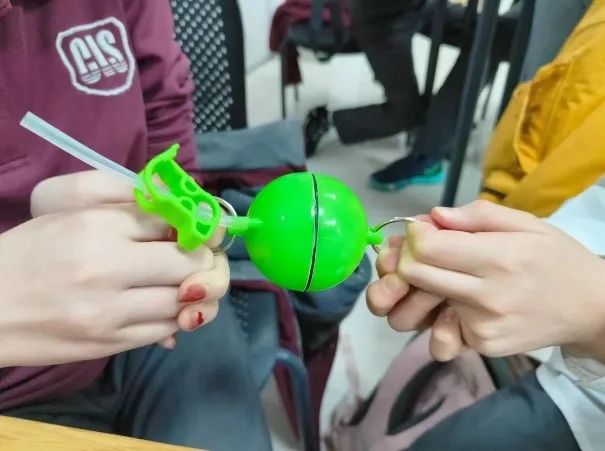
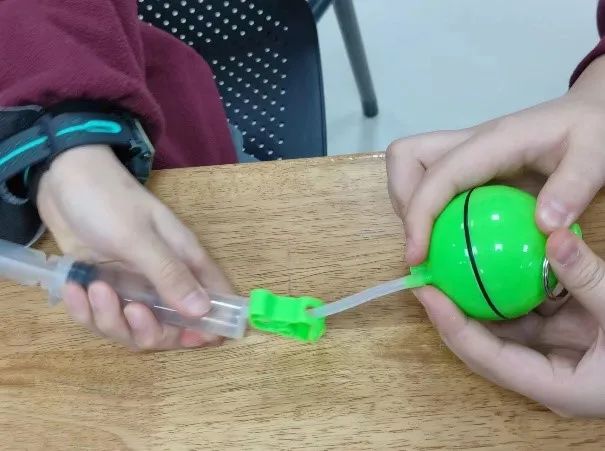
Grade 7 - Ms. Heather Exum
In Ms. Exum's 7th-grade classroom, an air of excitement and anticipation filled the room as her students eagerly delved into the world of March Mammal Madness. With research materials in hand, they embarked on a journey to learn about various animals, their habitats, and unique adaptations. Ms. Exum's guidance and encouragement fostered a sense of enthusiasm and scholarly curiosity among her students as they immersed themselves in the fascinating realm of mammalian biology. Their exploration extended beyond the classroom as they embarked on a joint art and science field trip to the Hefei aquarium. Against the backdrop of colorful aquatic life, the students observed and sketched various marine creatures, applying their knowledge of biology to real-world observations. Ms. Exum's innovative approach to blending art and science not only enhanced their understanding of marine ecosystems but also sparked a deeper appreciation for the interconnectedness of the natural world. Through their experiences, Ms. Exum's 7th-grade students embarked on a journey of discovery and exploration that would leave a lasting impact on their academic journey.
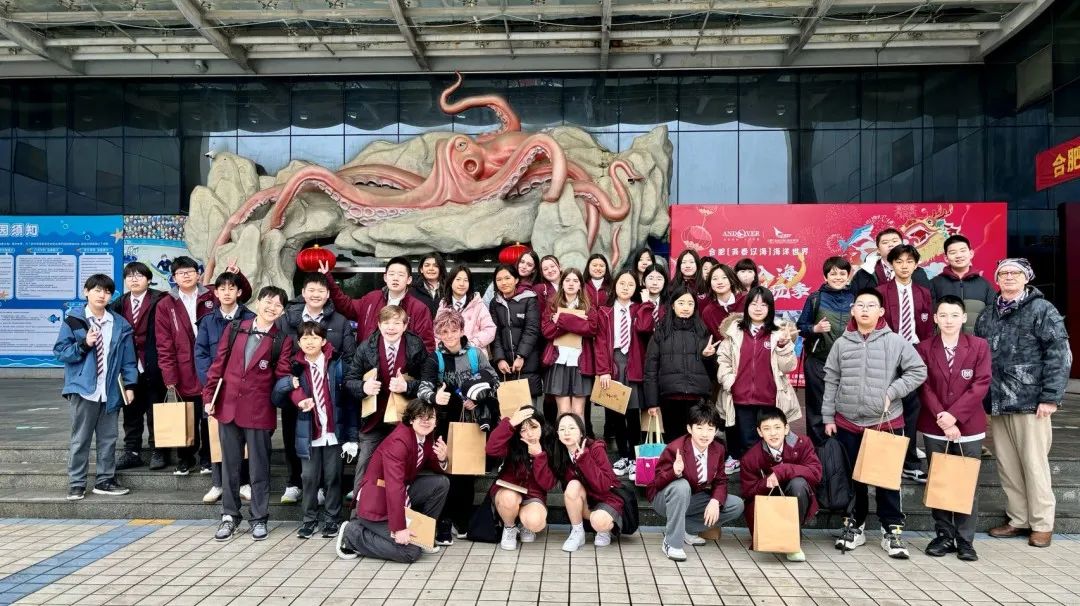
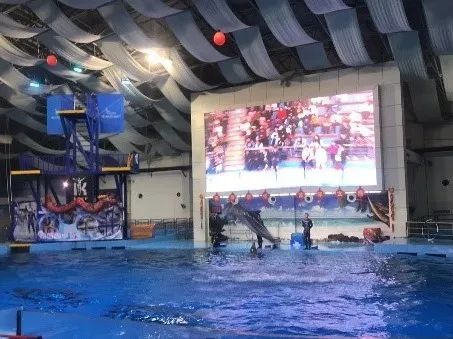
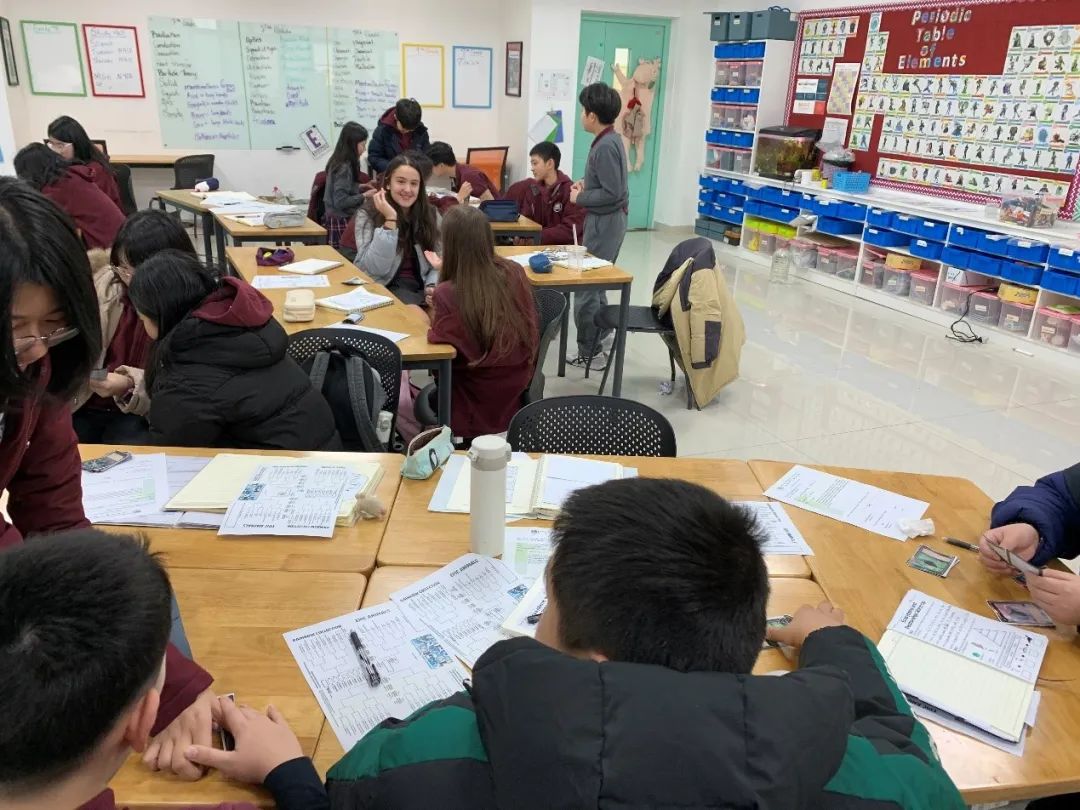
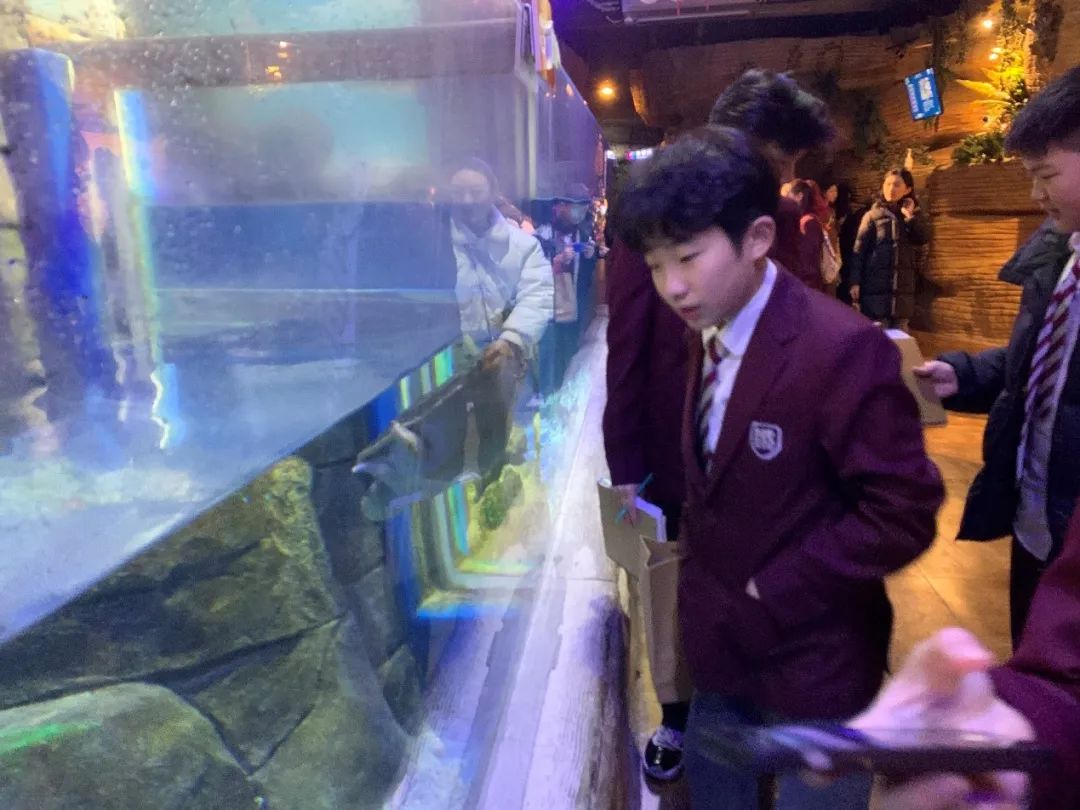
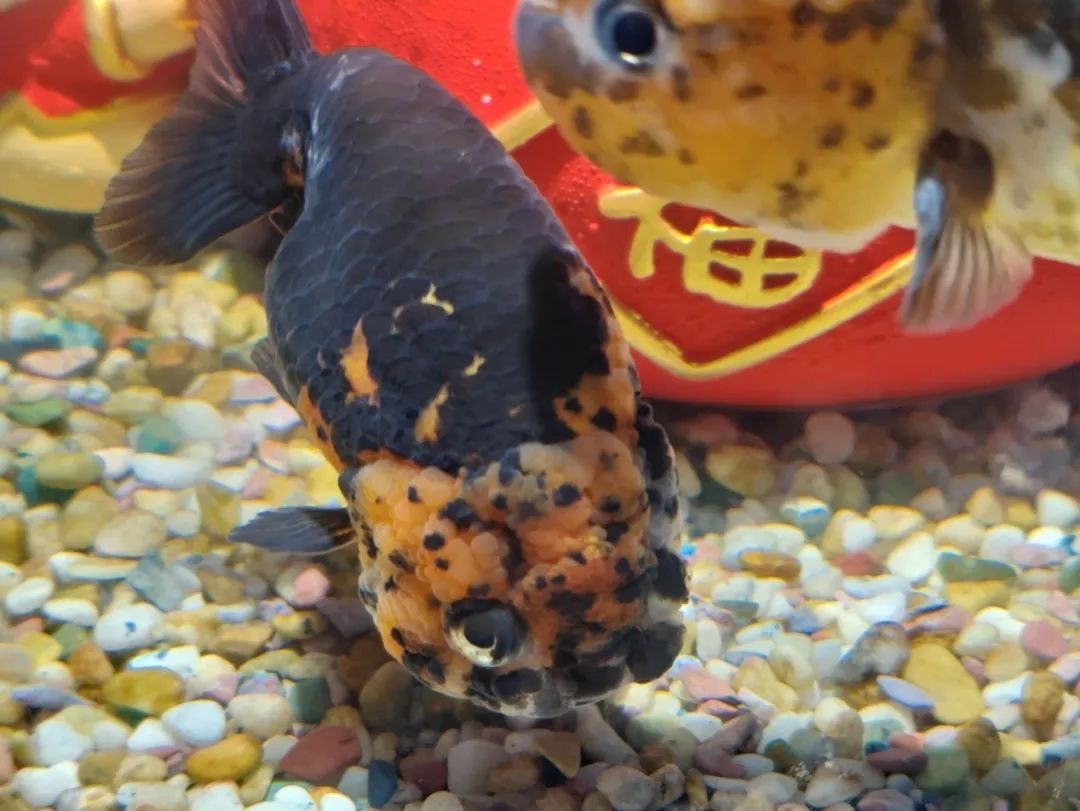
Slide pictures to see more
Grade 8-1 Dr. Holger Meinberg
This week in Grade 8 science class, students transitioned from wrapping up their summative test on Optics to diving into the new unit, "Building a Balanced Body System." The week began with the distribution of grades for the Optics test, allowing students to reflect on their performance. Common mistakes and areas for improvement were discussed to enhance understanding.
Moving forward, students delved into the concepts of the new unit. They explored the overarching theme of "Building a Balanced Body System" and gained an understanding of the key concepts involved. In preparation for an upcoming hands-on lab activity, students engaged in a preliminary investigation of organelles in plant and animal cells. Through research and observation, they familiarized themselves with the functions of different organelles.
During the lab session, students worked with thin leaves from the Elodea plant, utilizing microscopes to examine them at various magnifications. To enhance contrast and visibility, they employed dye, enabling them to identify additional organelles within the cells. Excitement ran high as students utilized their smartphones to capture images of their findings through the microscope, further enhancing their engagement with the material.
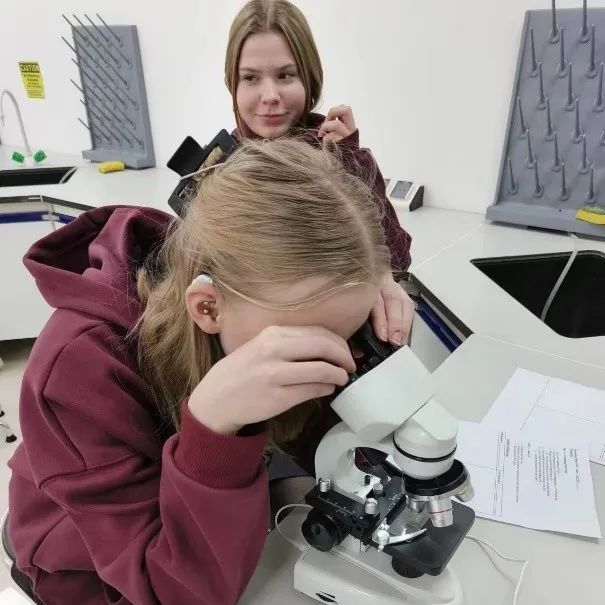
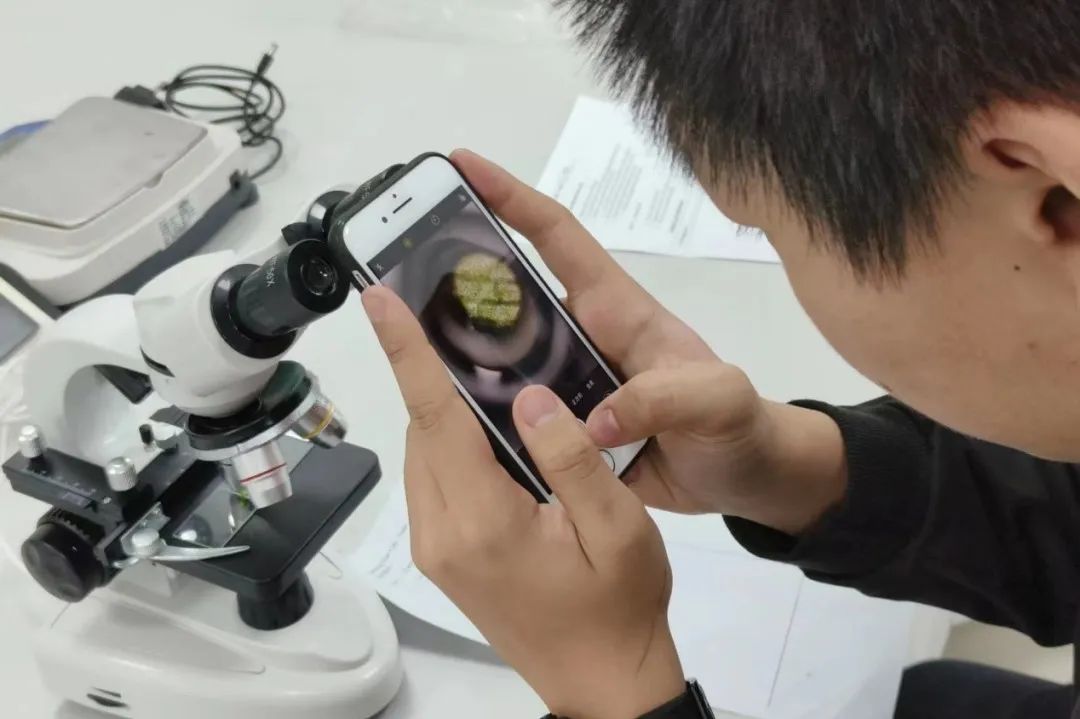
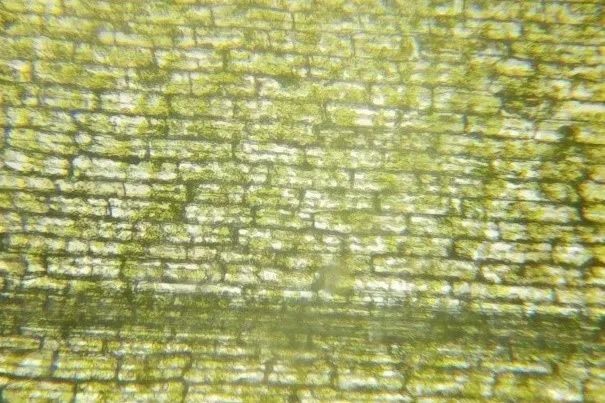
Grade 8-2 Ms. Heather Exum
In Ms. Exum's 8th-grade science classroom, a sense of wonder and curiosity permeated the air as her students embarked on their exploration of the human body's intricate systems. With eager anticipation, they gathered around microscopes to observe live cells for the first time. Under Ms. Exum's patient guidance, the students marveled at the intricate structures and dynamic movements within the microscopic world. As they peered through the lenses, witnessing the bustling activity of cells, a newfound appreciation for the complexity of the human body began to take root. Ms. Exum's hands-on approach and enthusiasm ignited a spark of curiosity within her students, inspiring them to delve deeper into their study of the body's systems with eagerness and determination. Through their observations of live cells, Ms. Exum's 8th-grade students embarked on a journey of discovery that would shape their understanding of biology for years to come.
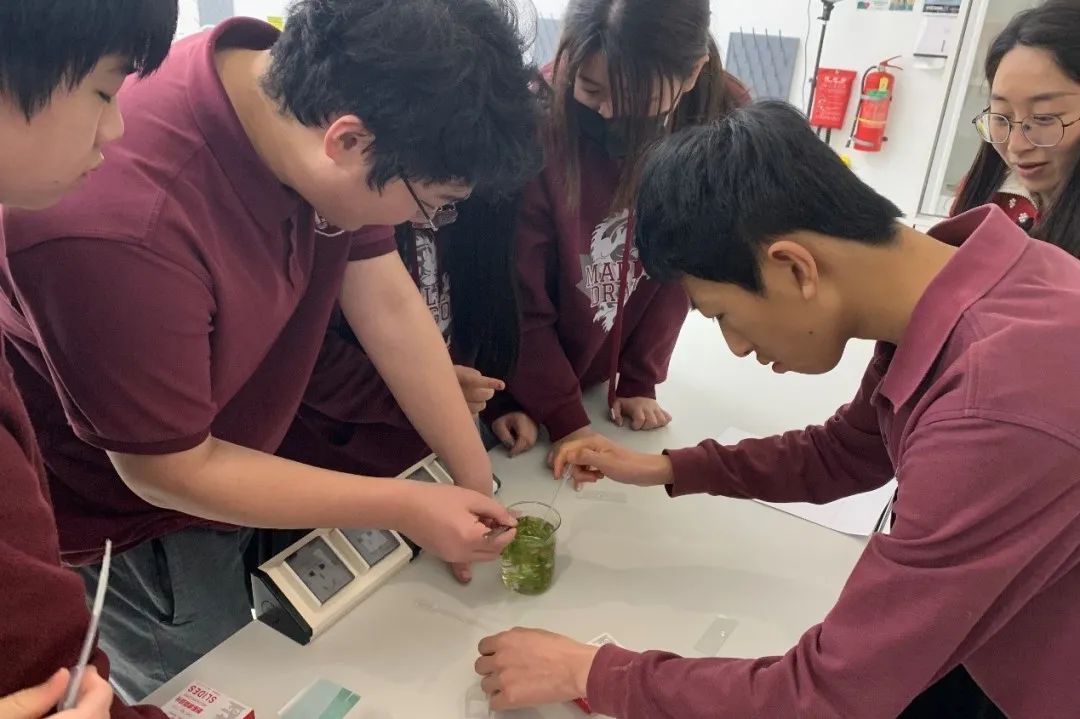
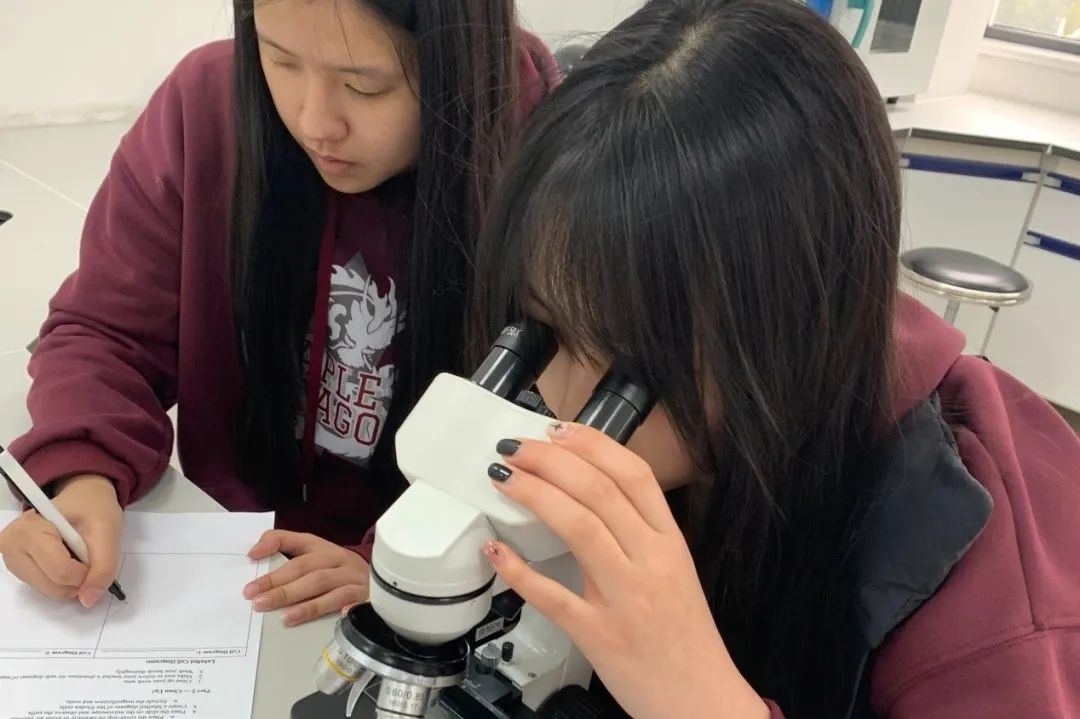
Grade 9 - Ms. Heather Exum
Grade 9 biology laboratory, a palpable sense of anticipation filled the air as students eagerly embarked on their photosynthesis experiments. Equipped with beakers, test tubes, and an array of plant specimens, the students meticulously followed experimental protocols. With focused determination, they measured oxygen production, monitored carbon dioxide consumption, and observed changes in pigment levels with precision. Ms. Exum's hands-on approach and supportive encouragement fostered an environment of scientific inquiry and exploration, empowering her students to make insightful observations and draw meaningful conclusions. As the experiments unfolded, lively discussions and collaborative problem-solving ensued, further enriching the learning experience. Through their active participation in the laboratory activities, 9th-grade students gained invaluable practical insights into the intricacies of photosynthesis, solidifying their understanding of this vital biological process.
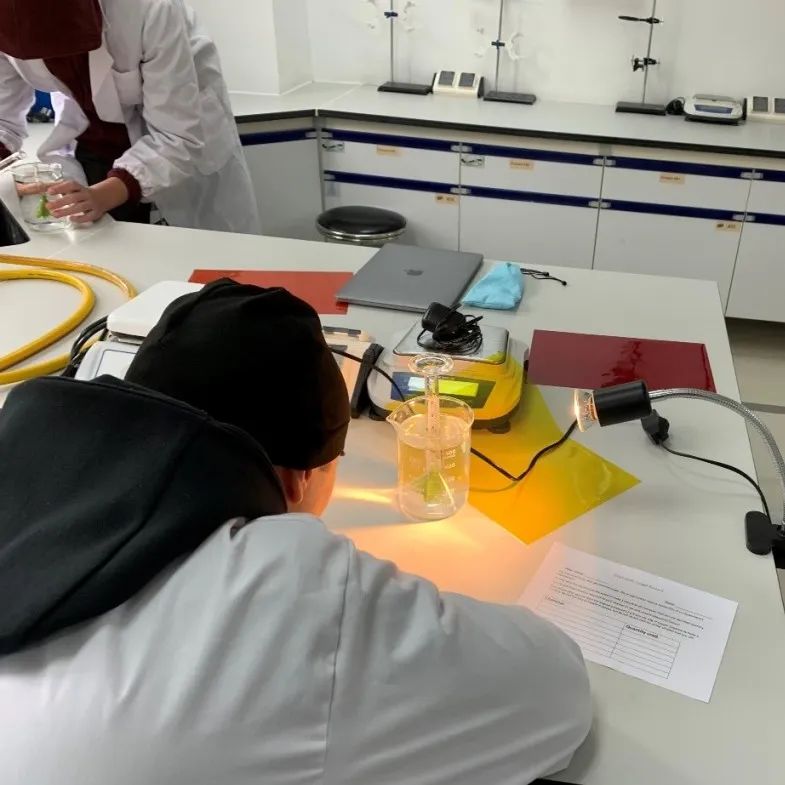
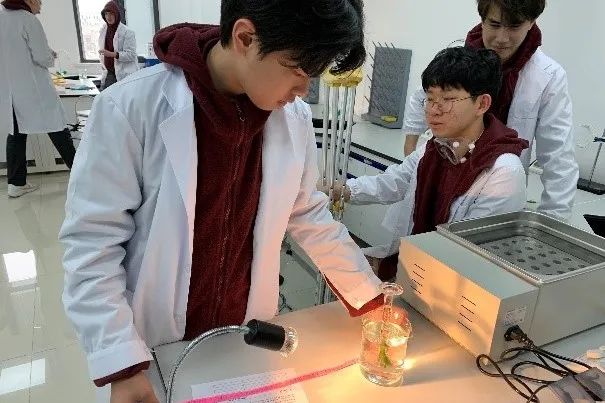
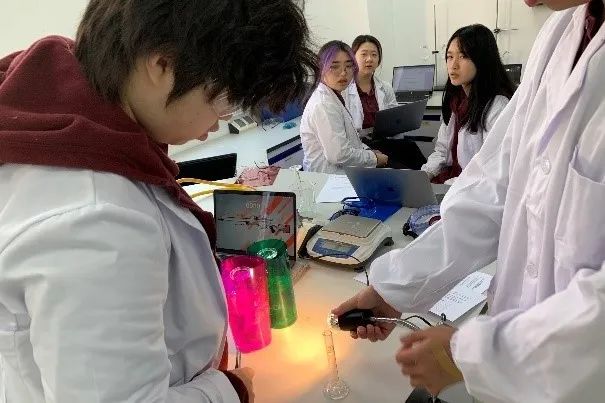
Grade 10 - Mr. Nick Smith
Grade 10 Science students have been consolidating their skills with Punnett squares and Dihybrid Inheritance. A difficult concept for some students and care was taken to ensure complete understanding and to give students lots of practice opportunity. The course introduced some of the concepts inheritance beyond the Mendelian Inheritance including Codominance, Incomplete dominance and lethal genes. All students also had the opportunity to attend the briefing on the Chemistry Curriculum for Years 11 and 12.
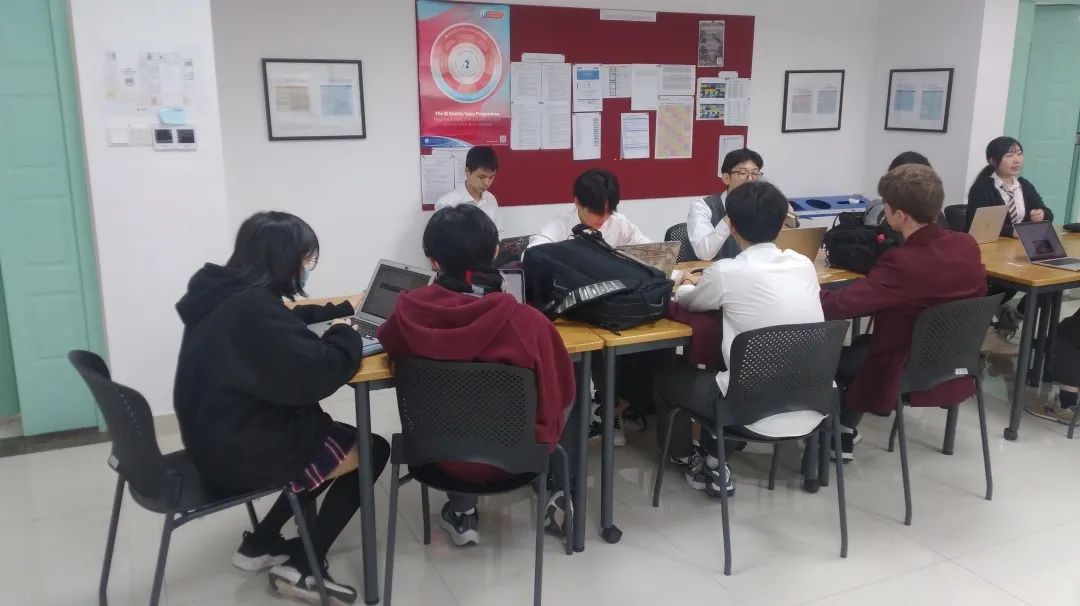
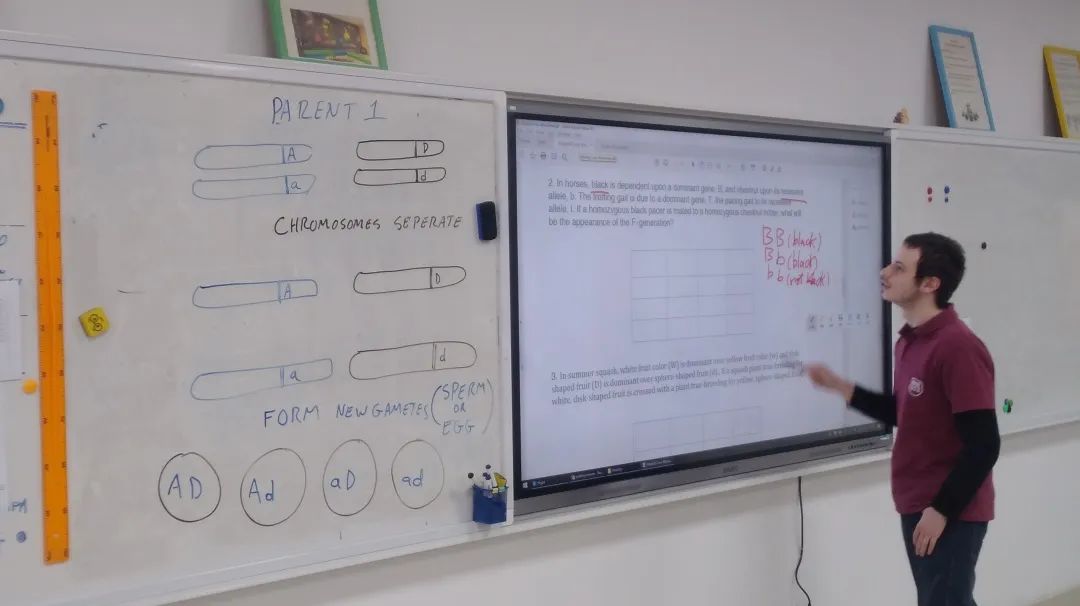
Biology Class - Grade 11 - Ms. Marina Baltikian
During this week in DP1 biology, students embarked on their exploration of A2.2 Cell Structure, delving into the intricacies of cellular organization and function. The primary emphasis of the lesson was directed towards the application of microscopy techniques and the meticulous measurement of objects observed under the microscope. Throughout the week, students engaged in hands-on activities and interactive learning experiences aimed at developing their proficiency in microscopy. They were introduced to various types of microscopes, including light microscopes and electron microscopes. A significant portion of the lesson was dedicated to mastering the art of measuring the size of objects observed through the microscope.
Slide pictures to see more
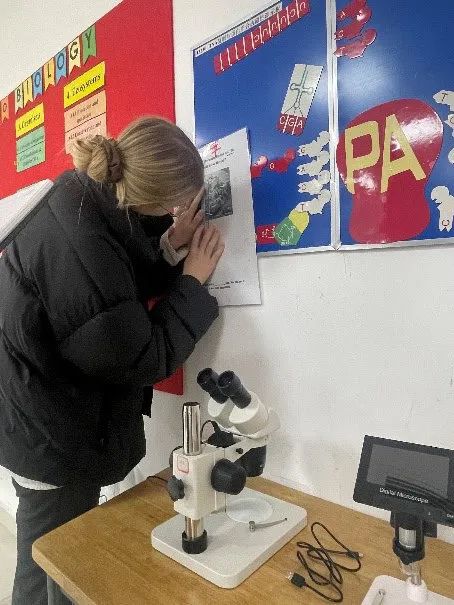
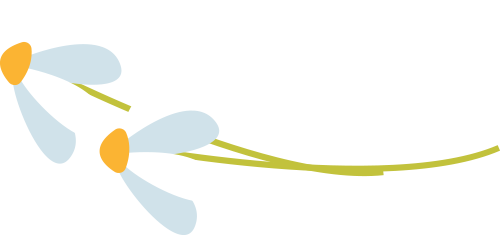
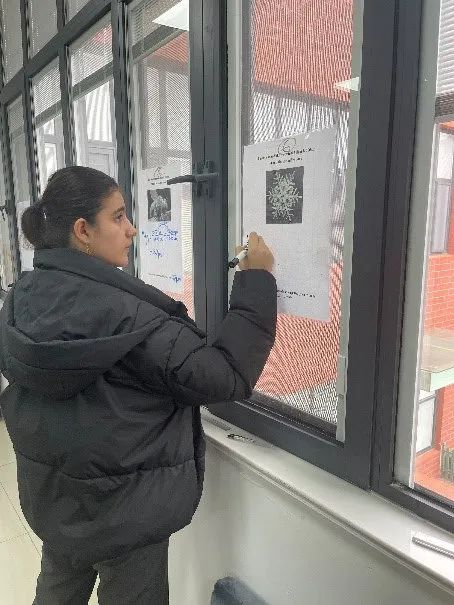

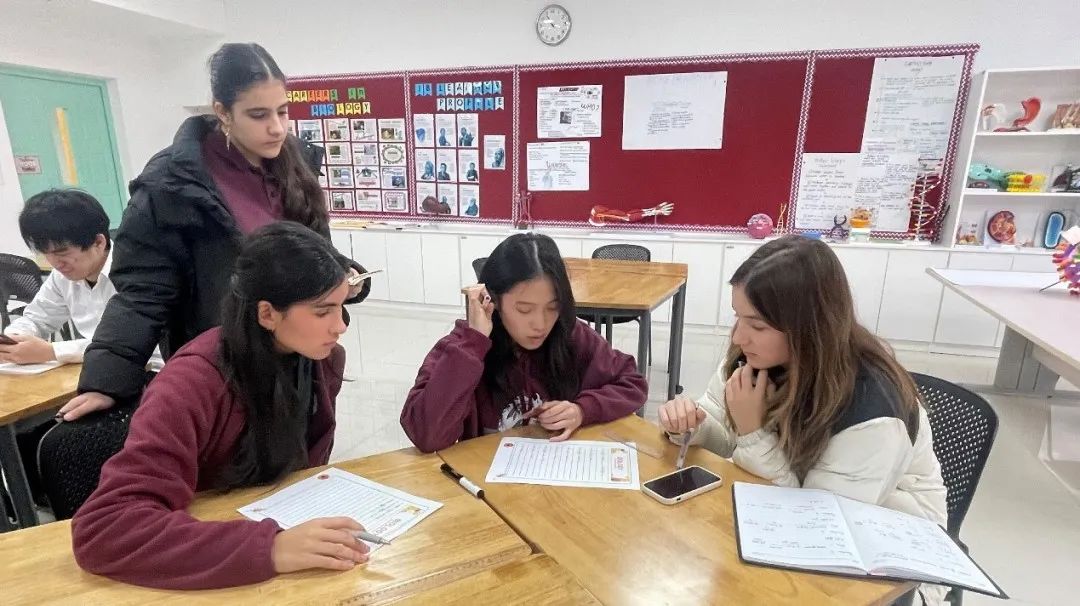
Biology Class - Grade 12 - Ms. Marina Baltikian
During this week in the DP2 biology class, students delved into the intricacies of Chapter 3.5, exploring Genetic Engineering and Modifications, where they examined concepts such as gene cloning, and recombinant DNA technology. Additionally, higher-level (HL) students commenced their study of Topic 11.2, focusing on Movement, investigating the mechanisms underlying locomotion from cellular movement to the coordination of muscles and skeletal systems. Through a combination of theoretical learning, and interactive discussions, students gained insight into the complexities of genetic manipulation and the physiological processes driving movement in organisms. The week proved intellectually stimulating, fostering a deeper understanding of biological systems and laying the foundation for further exploration and inquiry in the field of biology.
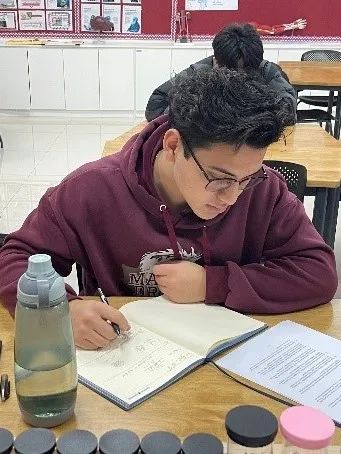

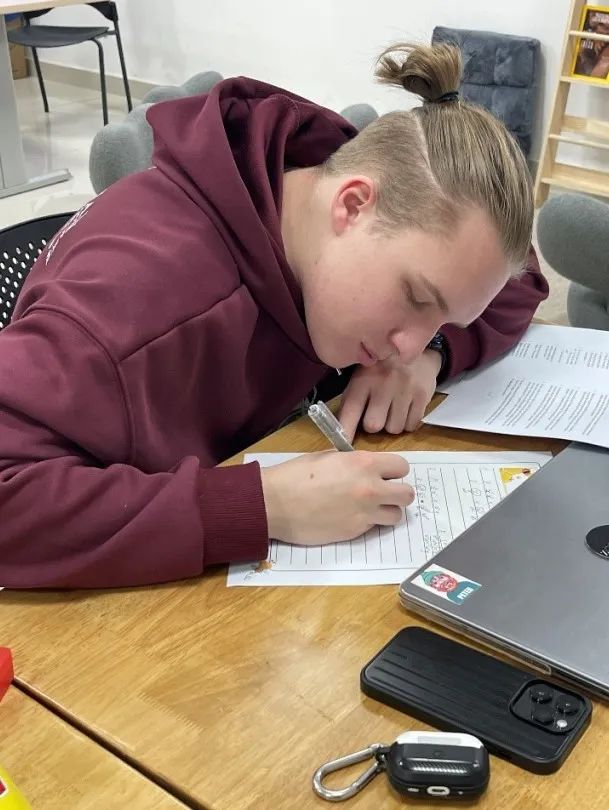

Chemistry Class - Grade 11 - Mr. Nick Smith
This week marked a significant milestone with the completion of the Intermolecular bonding topic. The class has been separated temporarily. HL students are learning advanced bonding. They are learning about Resonance, Hybrids and localisation. This will lead into understanding of pi bonding and molecular orbitals. Students completed the writing of a major laboratory report.
Chemistry Class - Grade 12 - Mr. Nick Smith
This week saw the completion of the Organic Chemistry Topic. Learning did not stop and all students then moved on to Spectroscopic methods. They study Index of Hydrogen Deficiency, Infrared Spectroscopy, Mass Spectroscopy and Proton Nuclear Magnetic Resonance. These techniques are combined to learn how to identify Organic Molecules. This is the last major topic for SL and NB students before they can start scheduled revision. HL students have some advanced topics to complete and are on track to have revision time in April.
ESS Class - Grade 11 - Mr. Samuel Ward
This week Grade 11 wrapped up Topic 2.3 Flows of energy and matter in their study of environmental systems and societies. The class discussed their ongoing mesocosm project, where students are investigating energy and matter flows in small-scale ecosystems they have constructed. This hands-on project allows students to apply their knowledge of biogeochemical cycles and observe ecological processes firsthand. It aligns with the practical work requirements of the course, providing an opportunity for skills development beyond the core curriculum.
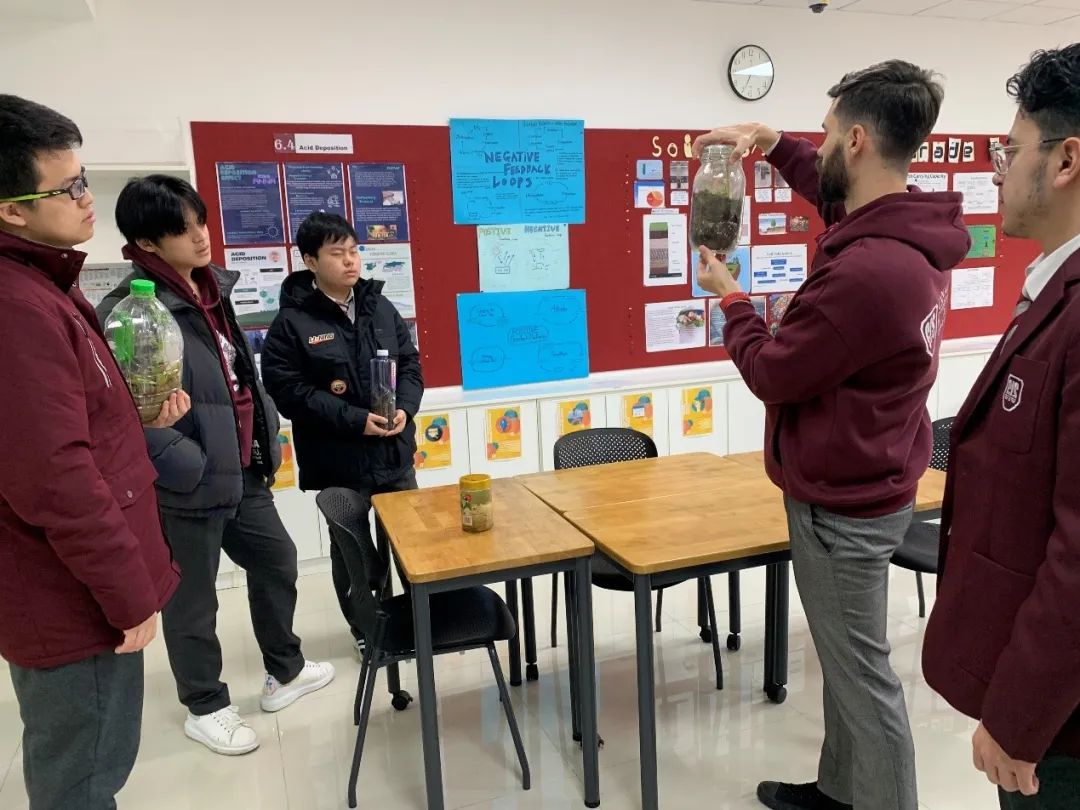
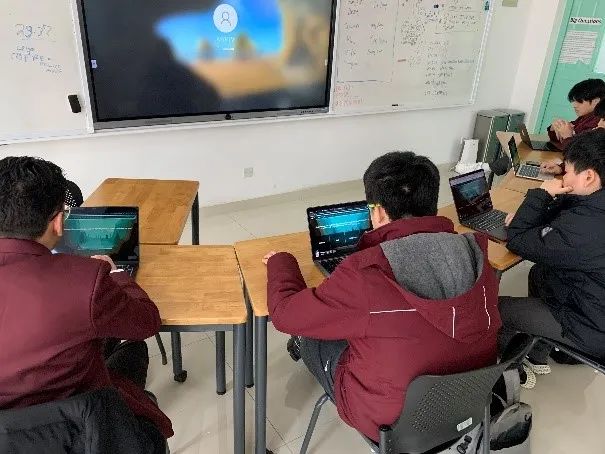
ESS Class - Grade 12 - Mr. Samuel Ward
This week in environmental systems and societies, the Grade 12 students finished learning about human population dynamics. To conclude this subtopic 8.1, each student went to the board to draw a demographic transition model for a country they had researched, demonstrating their understanding of how populations change over time. The class also prepared for the upcoming May exams by doing a timed practice paper 2, allowing students to experience the exam conditions and get feedback on their responses. Overall, it was a productive week where students wrapped up the population unit and prepared for the May assessments.
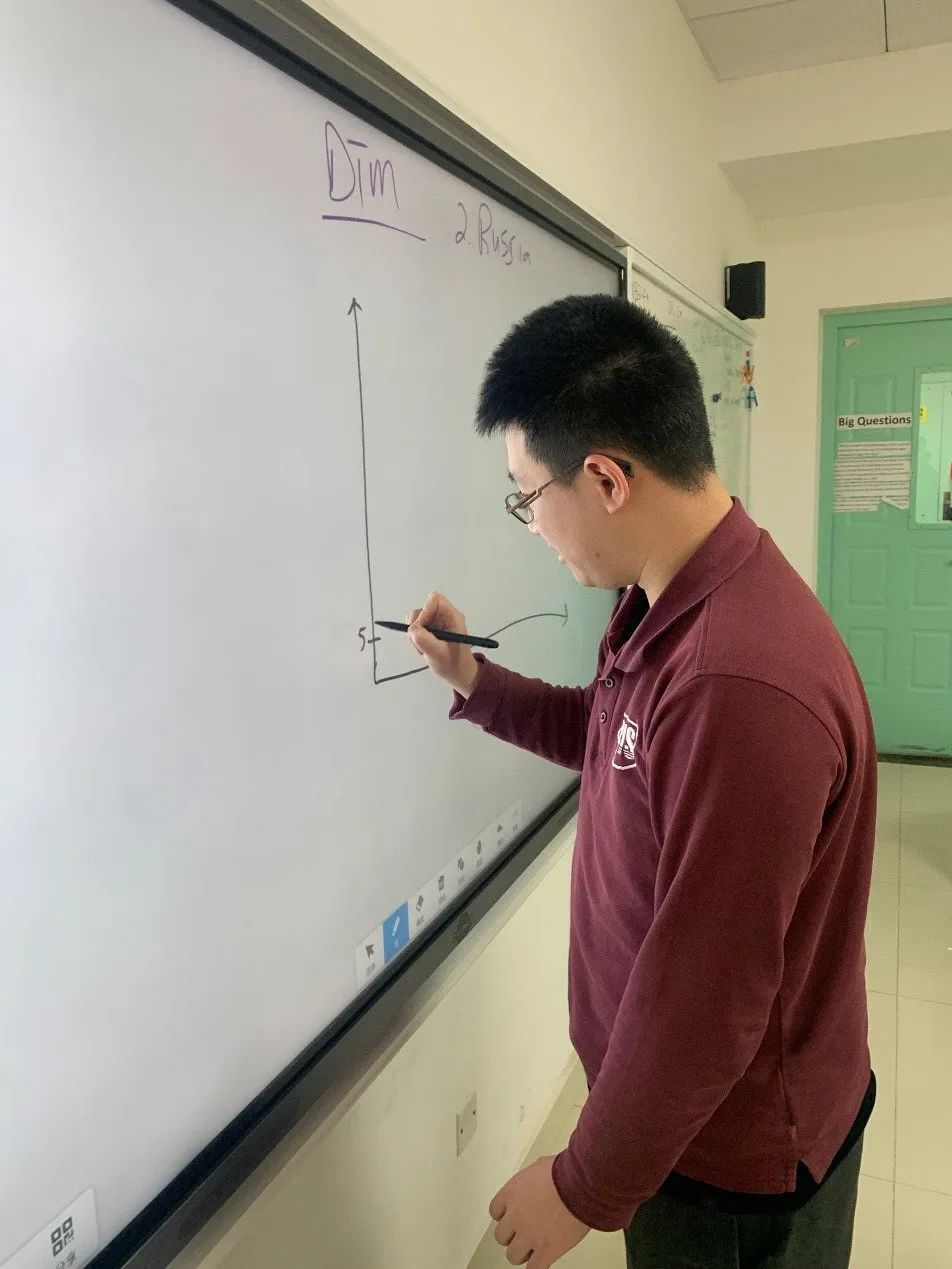
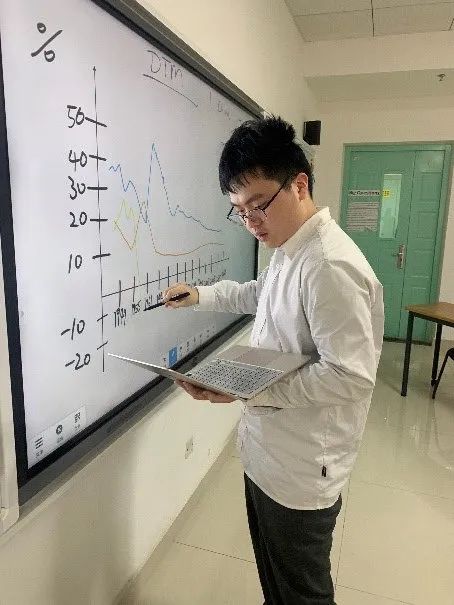
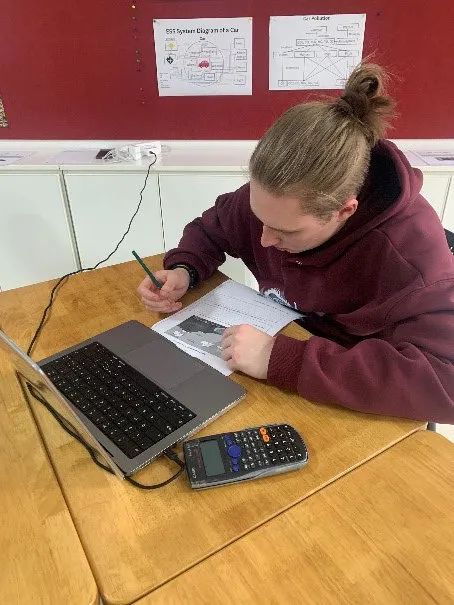
Physics Class - Grade 11 - Mr. Geofrey Kivisha
Throughout the week in IBDP Physics 1, students delved into Huygen's principle, foundational for the famed double-slit experiment pioneered by a renowned physicist. This exploration expanded their understanding of wave behavior. Additionally, the students comprehensively studied light phenomena, unraveling the intricacies of reflection and refraction. Applying Snell's law, they engaged in practical calculations, connecting theory with real-world applications. The week demanded a strong integration of mathematical skills as students worked to prove formulas related to the discussed topics. This approach fostered a holistic learning environment, encouraging problem-solving and reinforcing the theoretical underpinnings of physics. The combination of historical context, practical applications, and mathematical rigor enriched the students' grasp of these fundamental concepts in IBDP Physics 1.
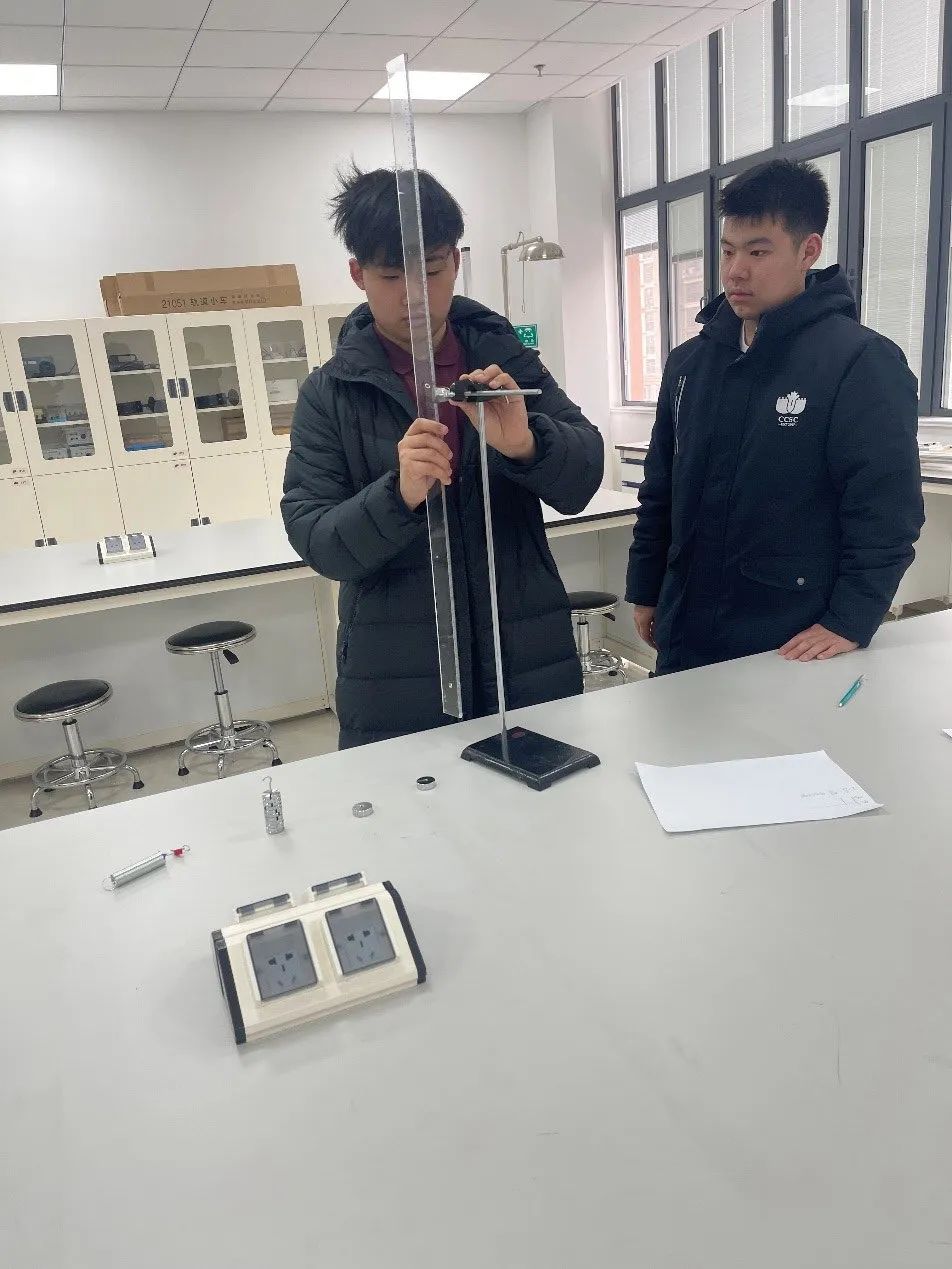

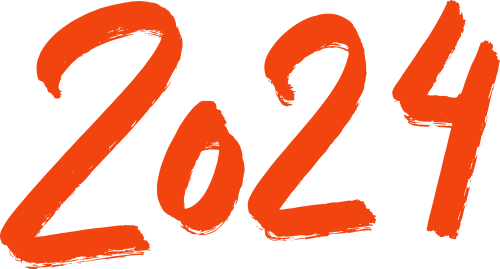
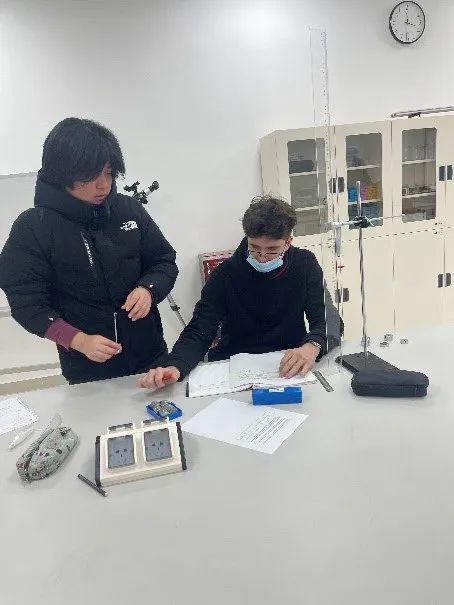
Physics Class - Grade 12 - Mr. Geofrey Kivisha
This week in IBDP Physics 2, students studied the field of modern physics more deeply and made important links between the advancement of historical ideas and the development of current theories. The lesson promoted a contextualized approach by emphasizing a thorough understanding of the foundations and development of modern physics. A large amount of attention was devoted to the complex ideas of radioactivity and nuclear fission, studying the underlying theories and considering their applications. The students had thoughtful conversations, comparing and contrasting past innovations with the state of nuclear physics now. Their understanding of contemporary physics was enhanced by this exciting research, which also helped them polish their analytical abilities.
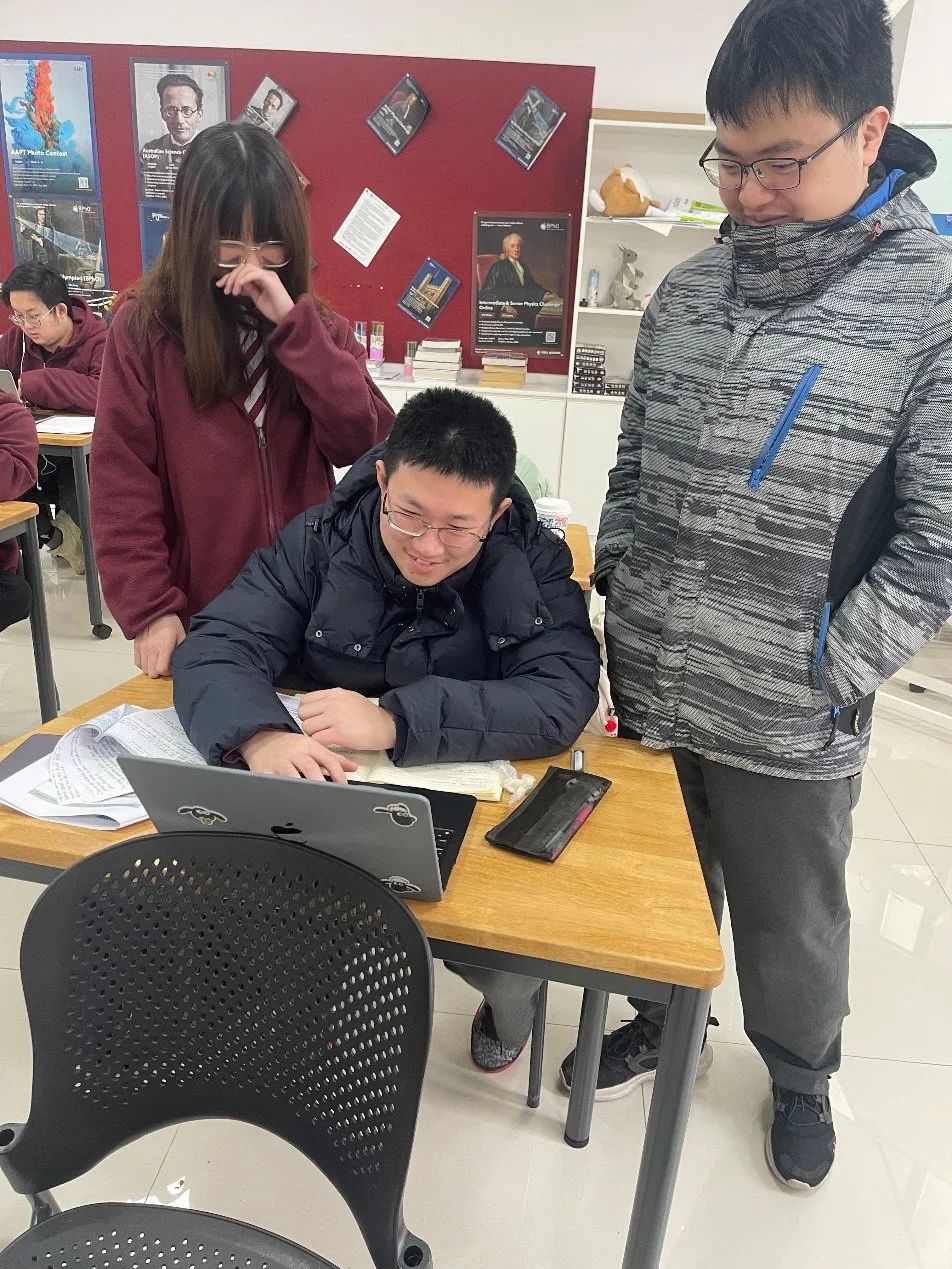
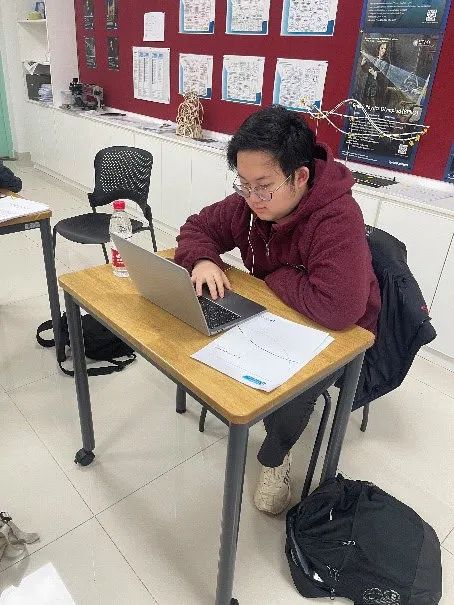
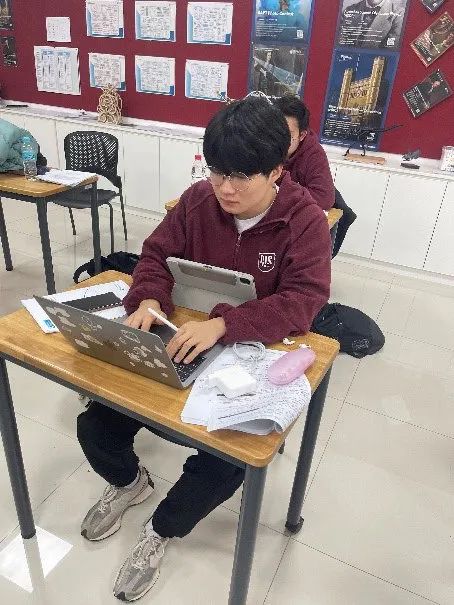
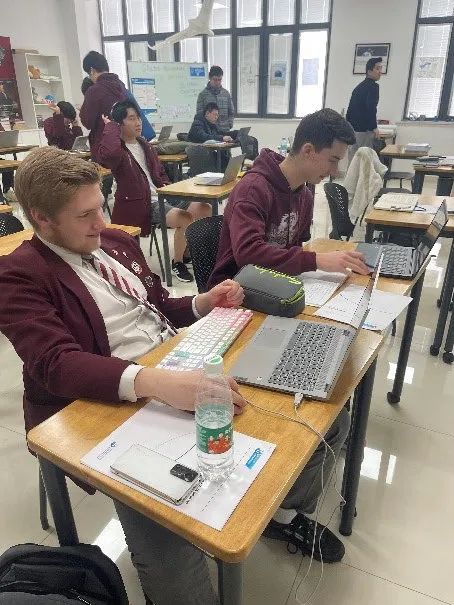
SEHS Class - Grade 12- Mr. Donavan Van Vuuren
This week in DP SEHS, we successfully completed the SL content of the curriculum, covering a wide range of topics and concepts. Next week, we are scheduled to conclude the HL content, ensuring that all students have received comprehensive instruction and understanding of the course material. Following the completion of the HL content, students will transition into the revision phase in preparation for the upcoming exam. This period will offer students the opportunity to consolidate their knowledge, reinforce key concepts, and refine their exam-taking strategies. As we approach the exam period, we encourage students to actively engage in revision activities, seek clarification on any lingering doubts, and utilize available resources to maximize their academic success.

声明:本文内容为国际教育号作者发布,不代表国际教育网的观点和立场,本平台仅提供信息存储服务。
全国500所国际学校大全 / 3分钟匹配5-8所 / 1年名校升学备考托管服务


